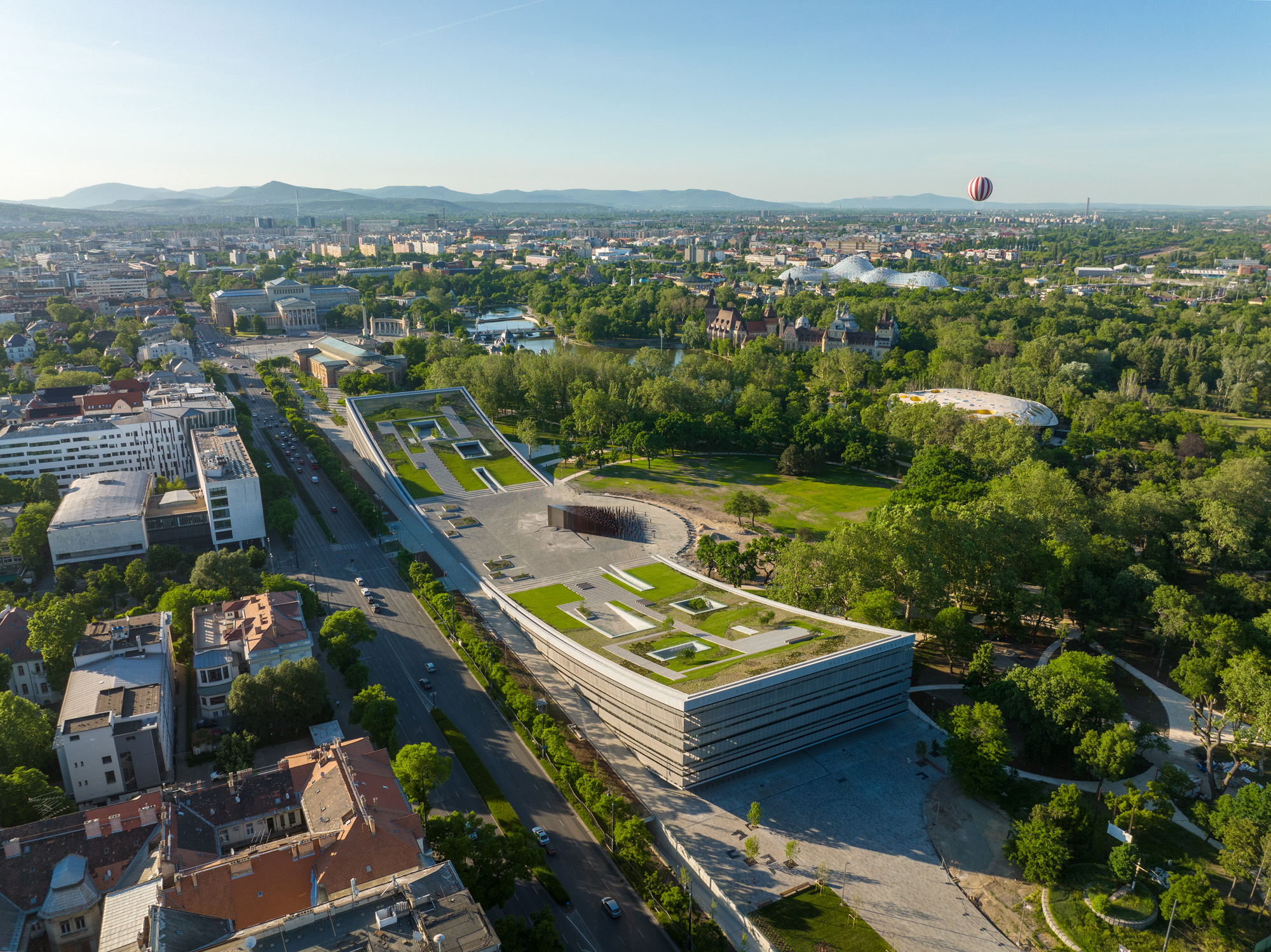

设计单位 Napur Architect
项目地点 匈牙利布达佩斯
建成时间 2022年
建筑面积 3.3万平方米
位于布达佩斯城市公园(Városliget)的民族博物馆新馆现已启用。这一获誉颇多的新博物馆建筑,是欧洲最大的城市文化发展项目“Liget Budapest Project”的组成之一,由匈牙利建筑工作室Napur Architect主持设计。建筑上线条简洁而不失动感,与公园环境相得益彰,也与周边地区形成了对话。
The new building of the Museum of Ethnography in the Budapest City Park (Városliget) was opened (23/05/2022). The multiple award-winnig new museum building – which is part of Europe’s largest urban-cultural development called Liget Budapest Project - designed by FERENCZ, Marcel; Napur Architect - has dynamic yet simple lines simultaneously harmonised with the park environment and communicating with the surrounding urban area.


城市公园(Városliget)对于博物馆而言并不是一个陌生的场所,在1896年的国家千年博览会上(National Millennium Exhibition),就有藏品在此展出。自1872年成立以来,博物馆的藏品曾一直分属于不同的设施,迄今已有25万件,涵盖了从喀尔巴阡盆地至世界的每个角落。
The City Park (Városliget) is not an entirely unknown venue for the Museum of Ethnography, since it was here in 1896, at the National Millennium Exhibition. The collection, which now comprises 250 thousand items from the Carpathian Basin and from every corner of the world, has been hosted by various facilities since its establishment in 1872, but never in its history did it operate in a building designed specifically to cater to its needs.
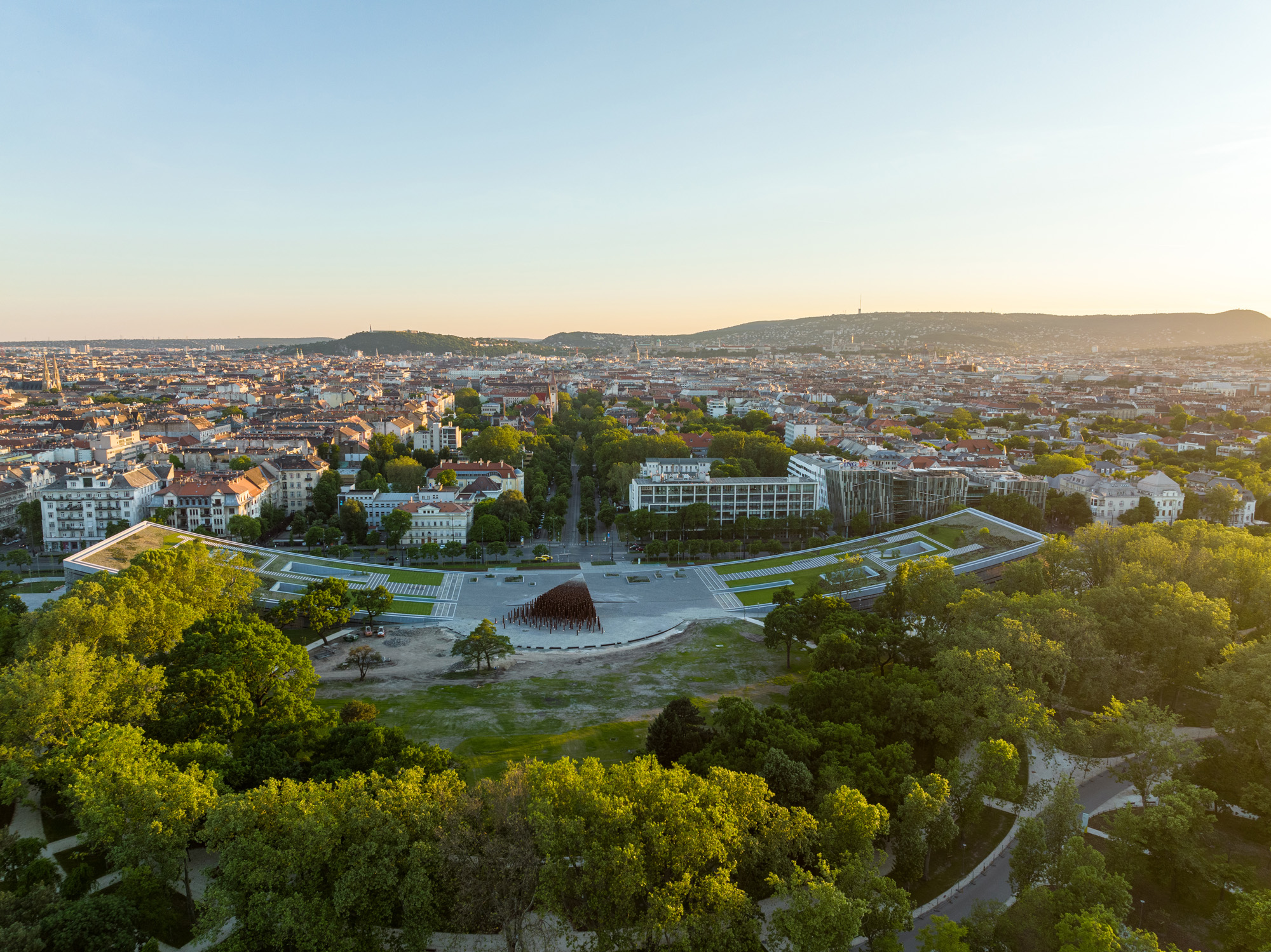
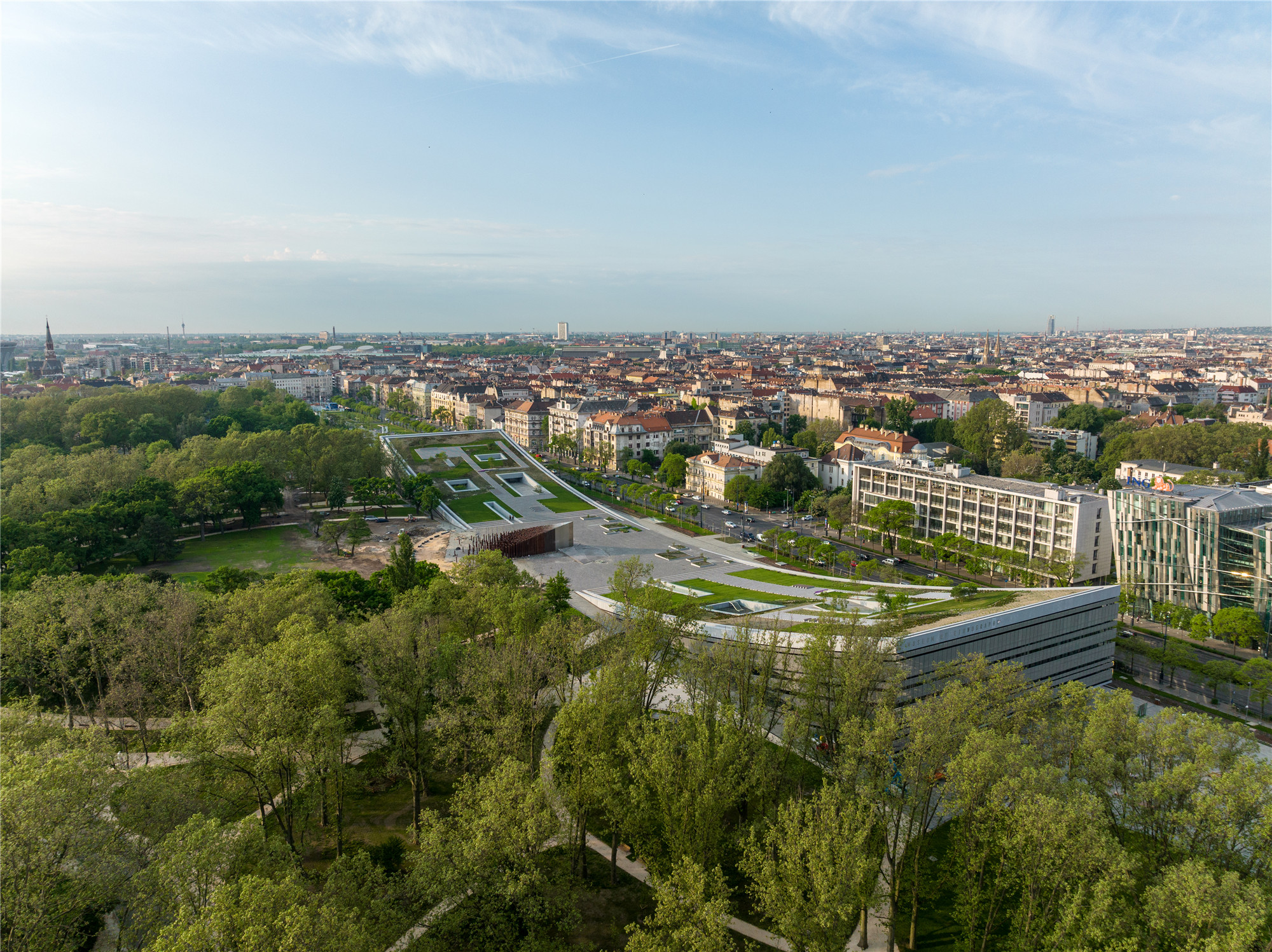

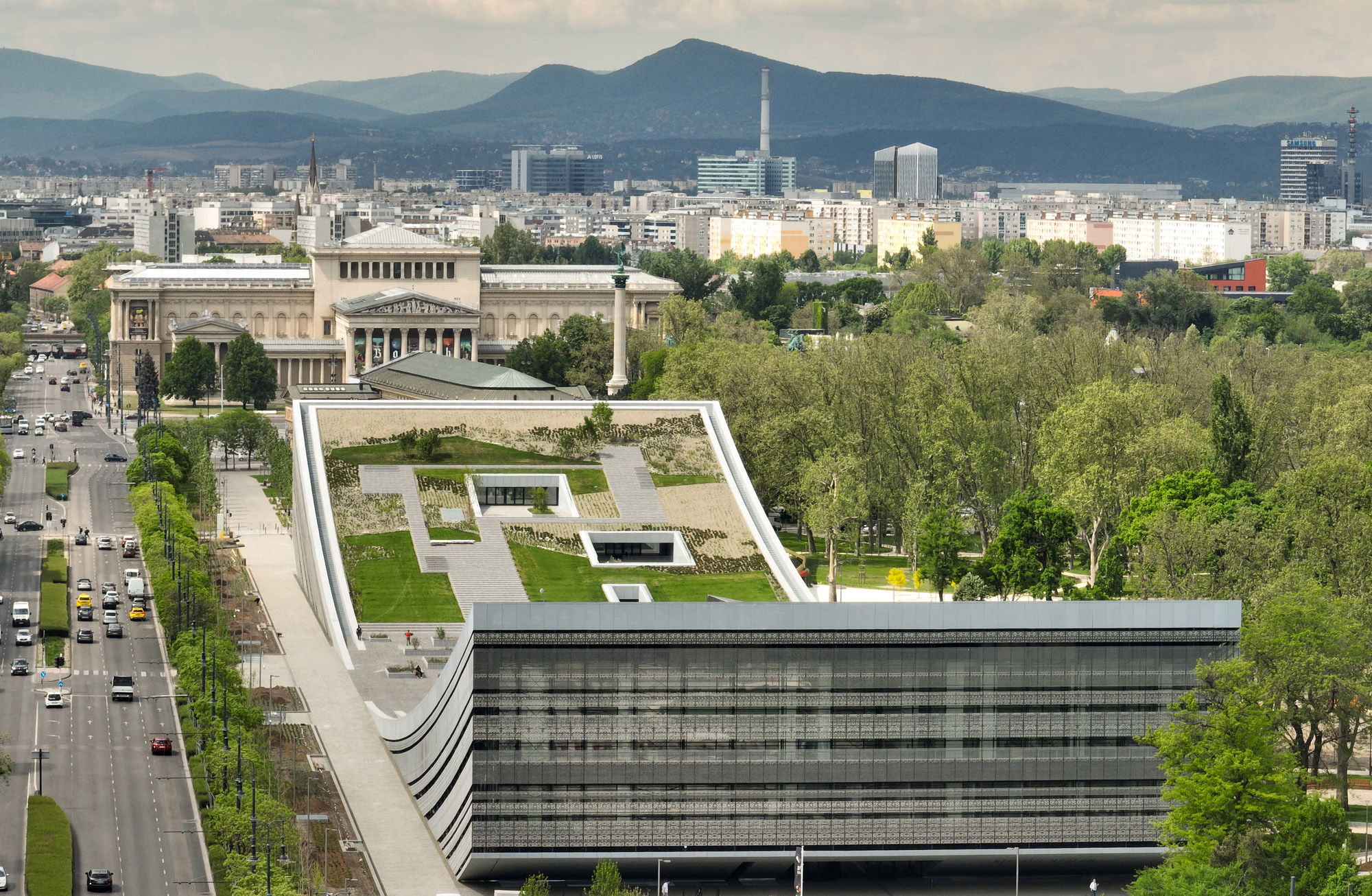
民族博物馆,也是首座为这些藏品量身定制的建筑。这里曾为匈牙利元老院大厦(Hungarian Curia)的所在地,受空间及发展机遇的限制,远远无法满足博物馆的需求。从国际设计竞赛、高质量的施工建造到如今的建成开放,这座博物馆终于拥有了自己的“新家”。这座真正的现代化建筑,各项标准与世界看齐,既能满足专业的需要,也能兼顾不同展品与游客的需求。
The current location, which once was home to the Hungarian Curia, is far from being suitable to meet the requirements of a museum, and is severely limited in terms of space and opportunities. As a result of the international design competition, successful construction, and completion in May 2022 the Museum of Ethnography was finally given a new home in a truly modern building of an all-round world-class standard that will satisfy professional requirements, while catering to the needs of the collection and visitors alike.
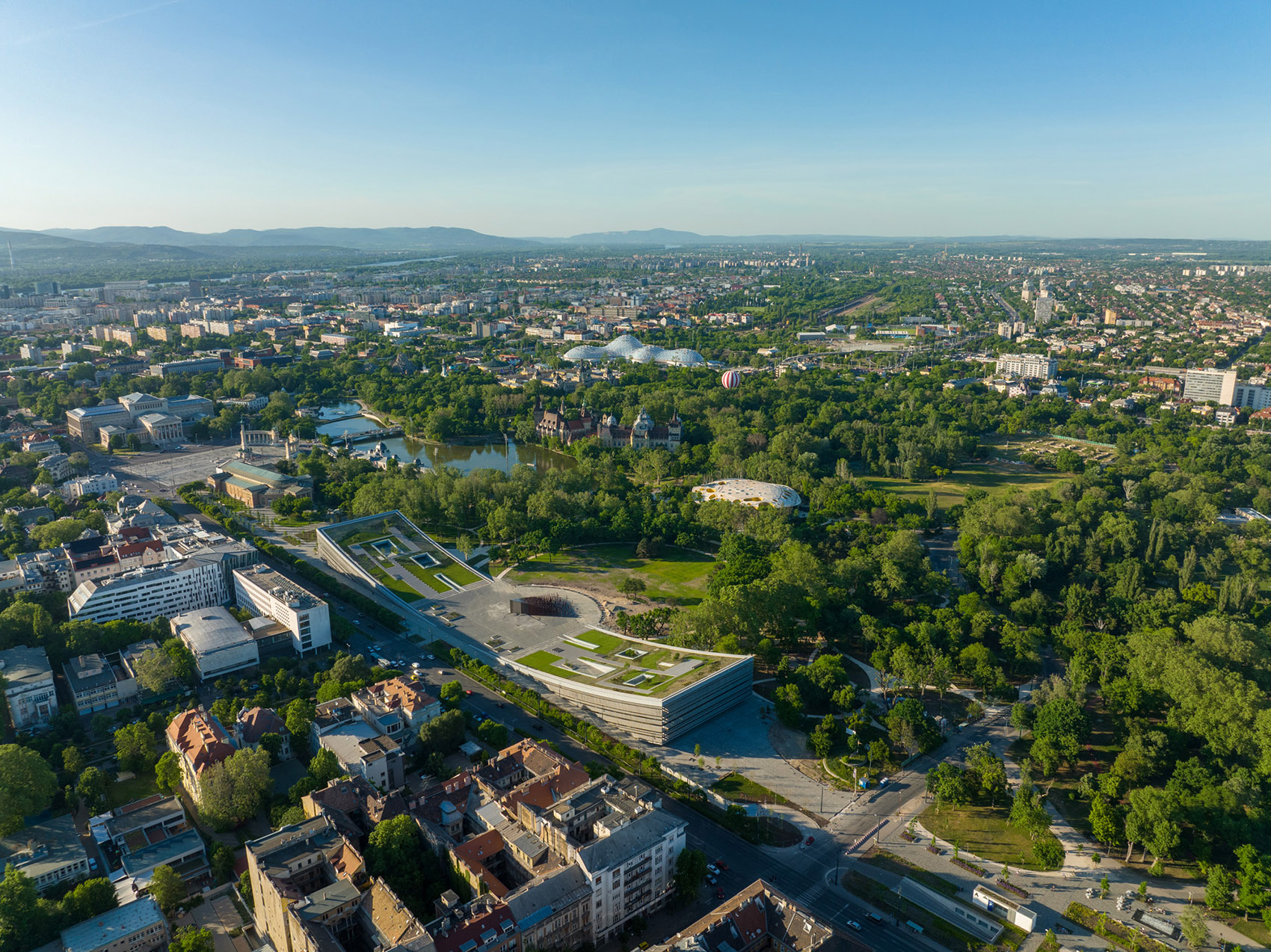
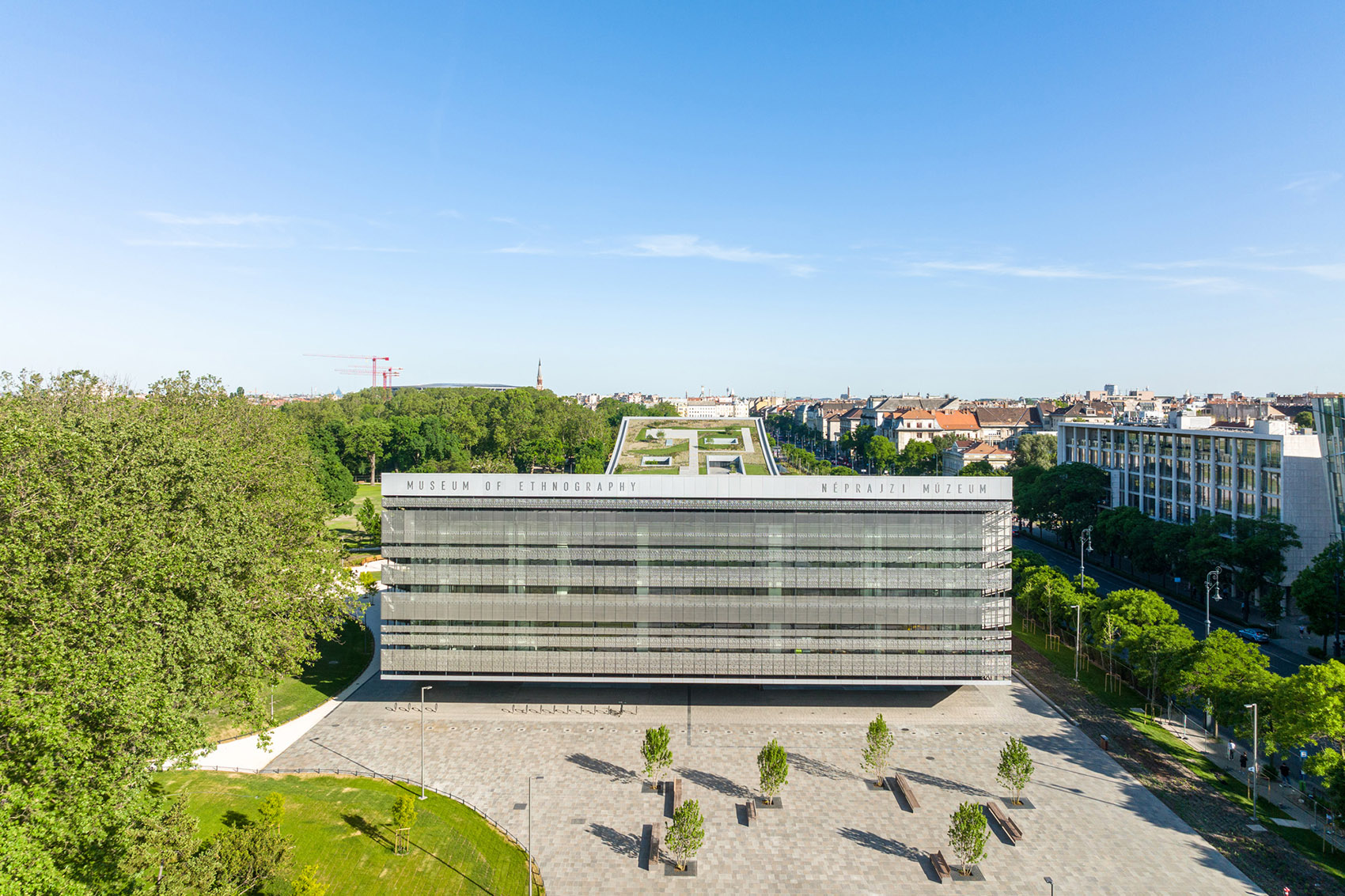

在国际竞赛中,Napur Architect击败扎哈事务所、BIG等一众劲旅,赢得了博物馆最终的设计权。方案以其简约而不失动感的设计,既与自然环境相协调,也在城市肌理中实现了联通与对话。
According to the decision of an international jury, the competition was won by the Hungarian architectural studio, Napur Architect (beating leading world-class architect studios such as Zaha Hadid, BIG, etc.), whose building is distinguished by a dynamic yet simple design harmonised with the natural environment of the park while communicating with the urban texture of its surroundings.

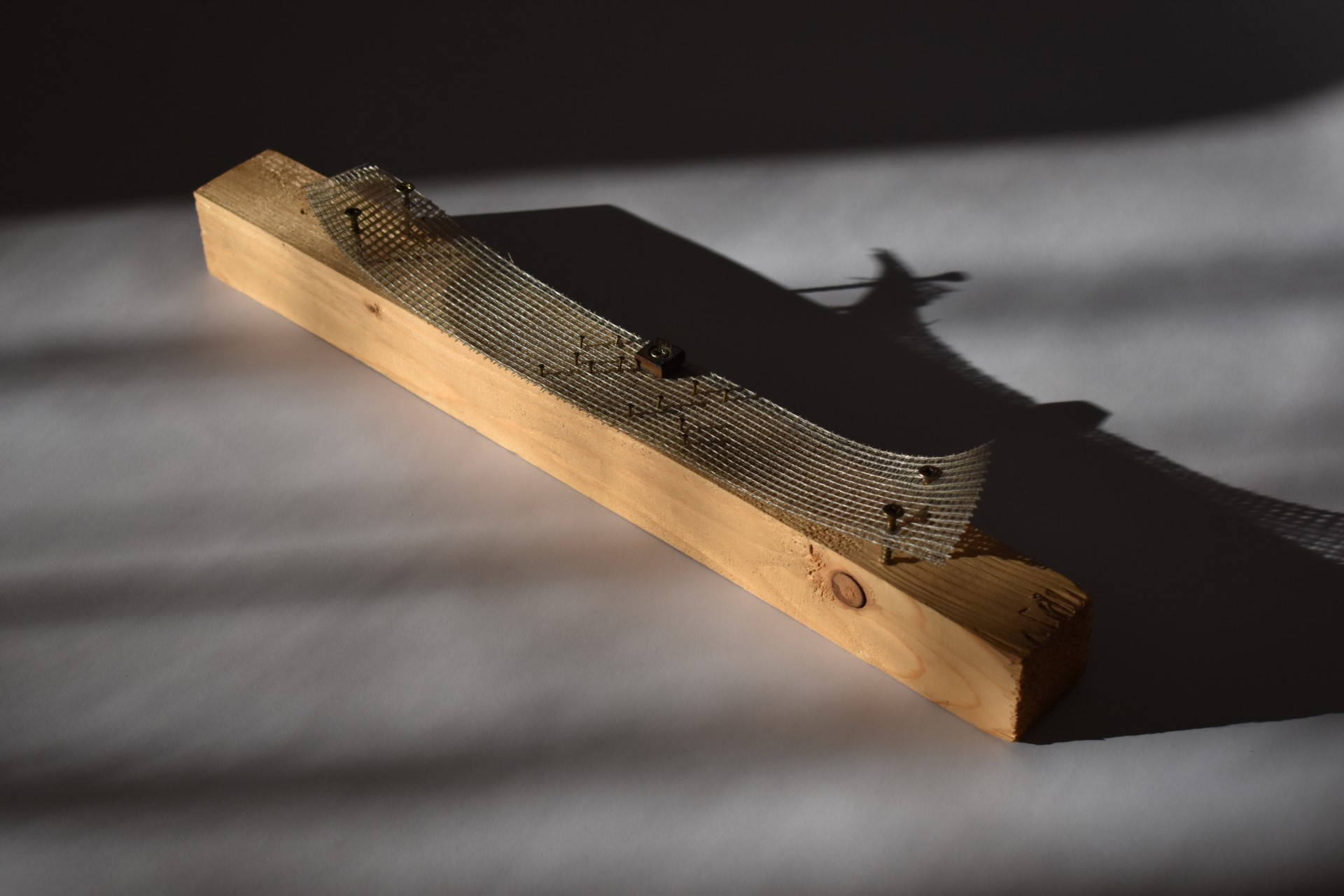
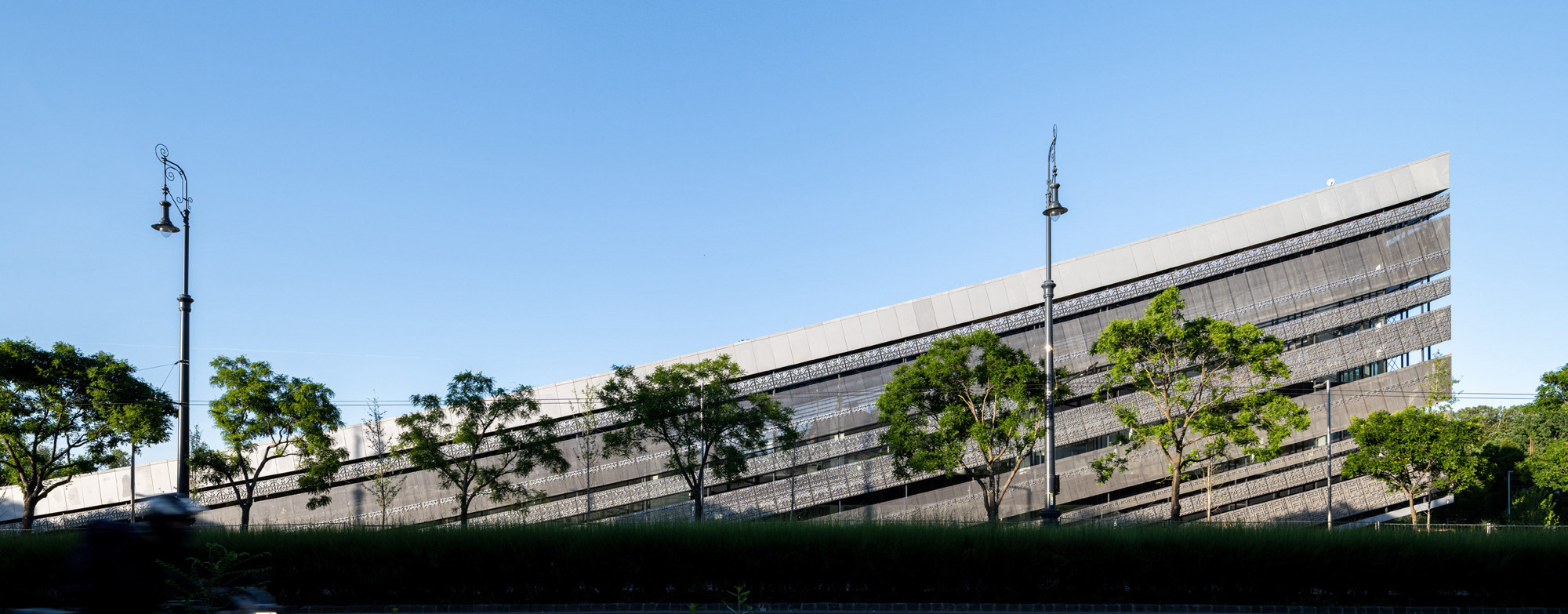

轻轻弯曲的线条,让建筑成为联通城市与公园的门户与通道。建筑60%的结构均位于地下,屋面景观及地上部分的通透设计,让新博物馆的巨大体量也能与环境和谐相融。种有草坪的屋顶区域成为一处愉快的社区空间,迎接着公园游客的到来。
The gently curving lines enable the building to function as a gateway and a passage linking the city and the park. Sixty percent of the structure is under ground level, and thanks to the landscaped roof and the transparency of the sections over the ground, the new museum is adapted to its environment in its scale too. The grass-covered roof area will be a pleasant community space awaiting visitors to Városliget.
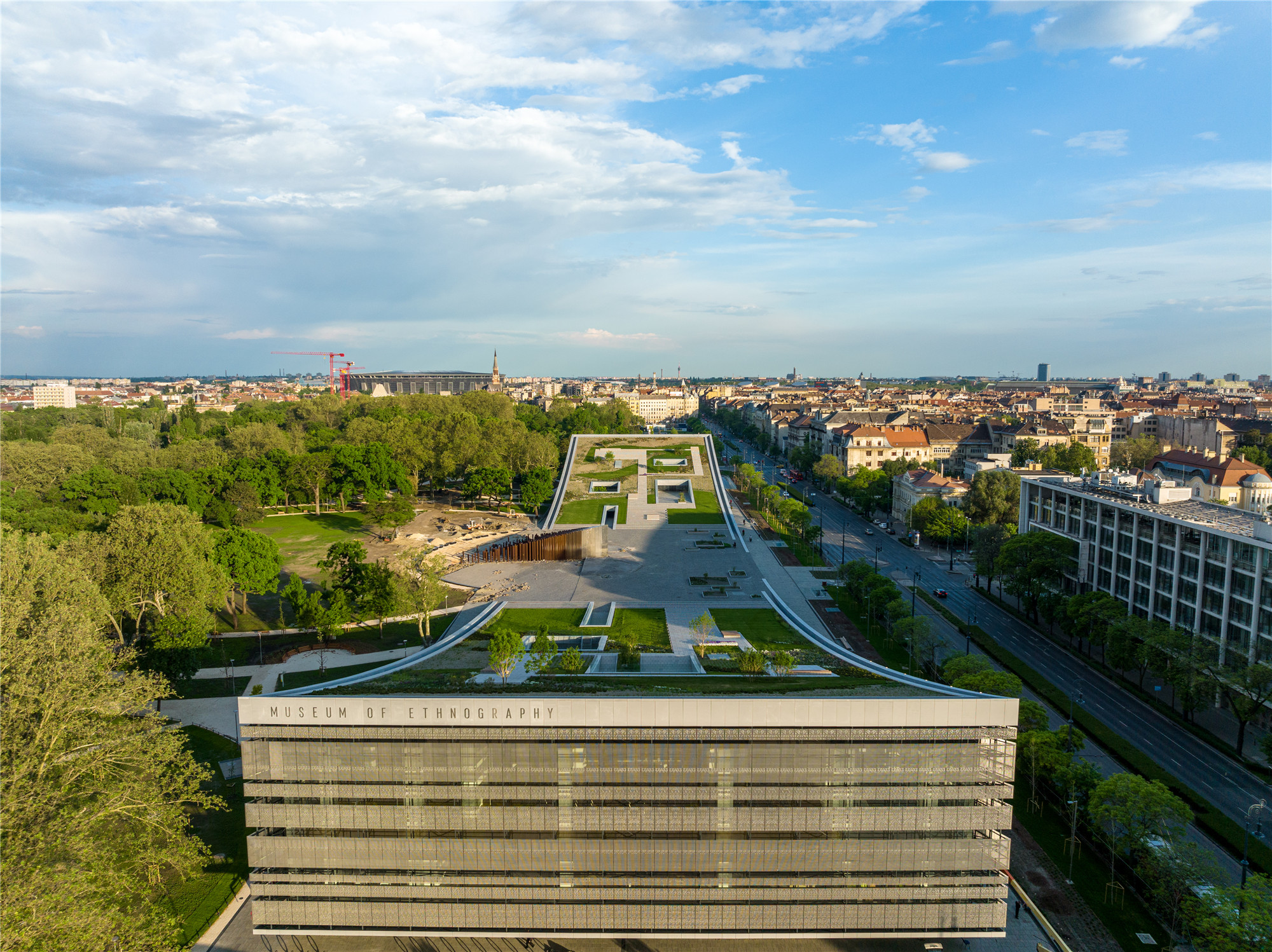
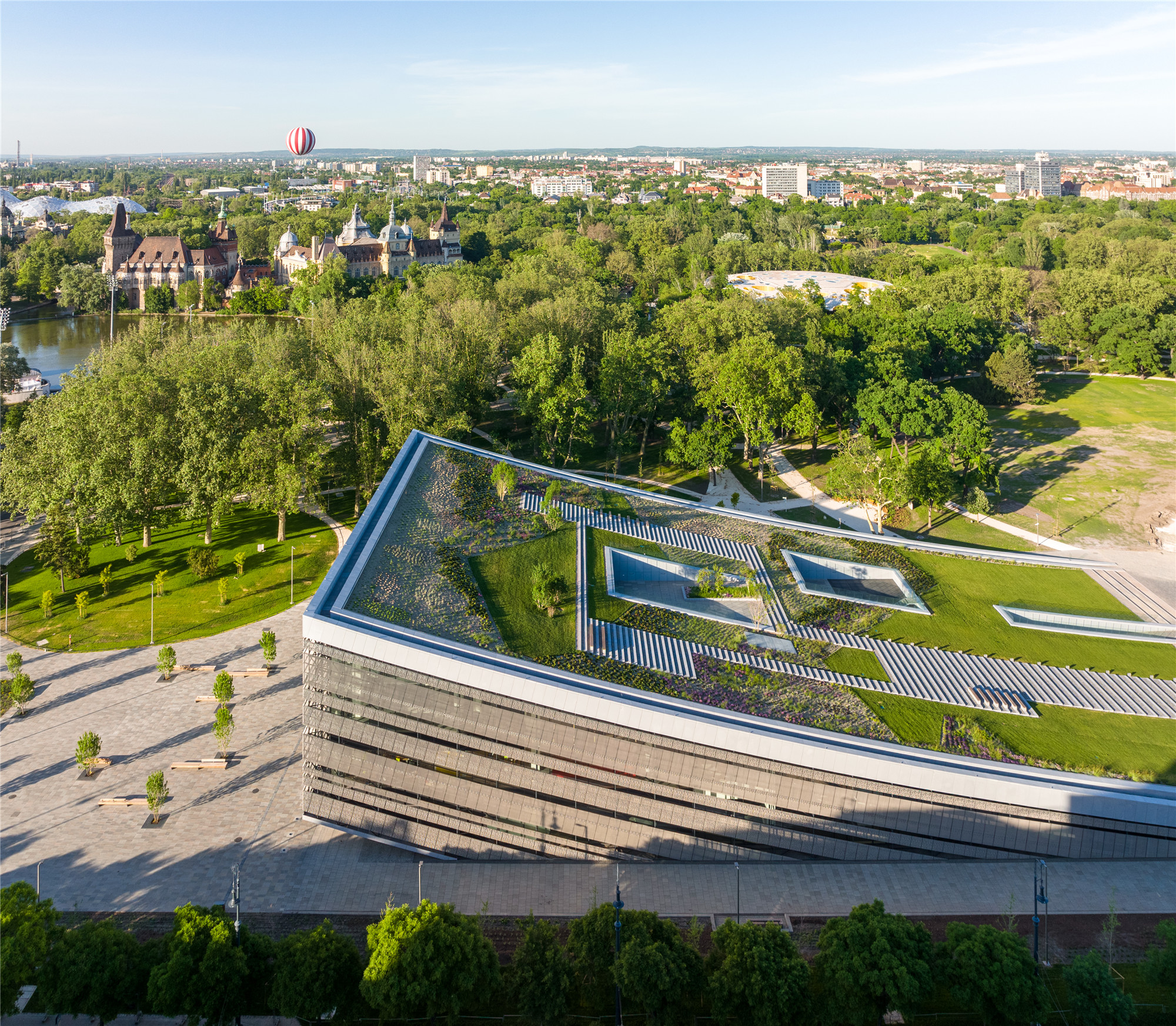
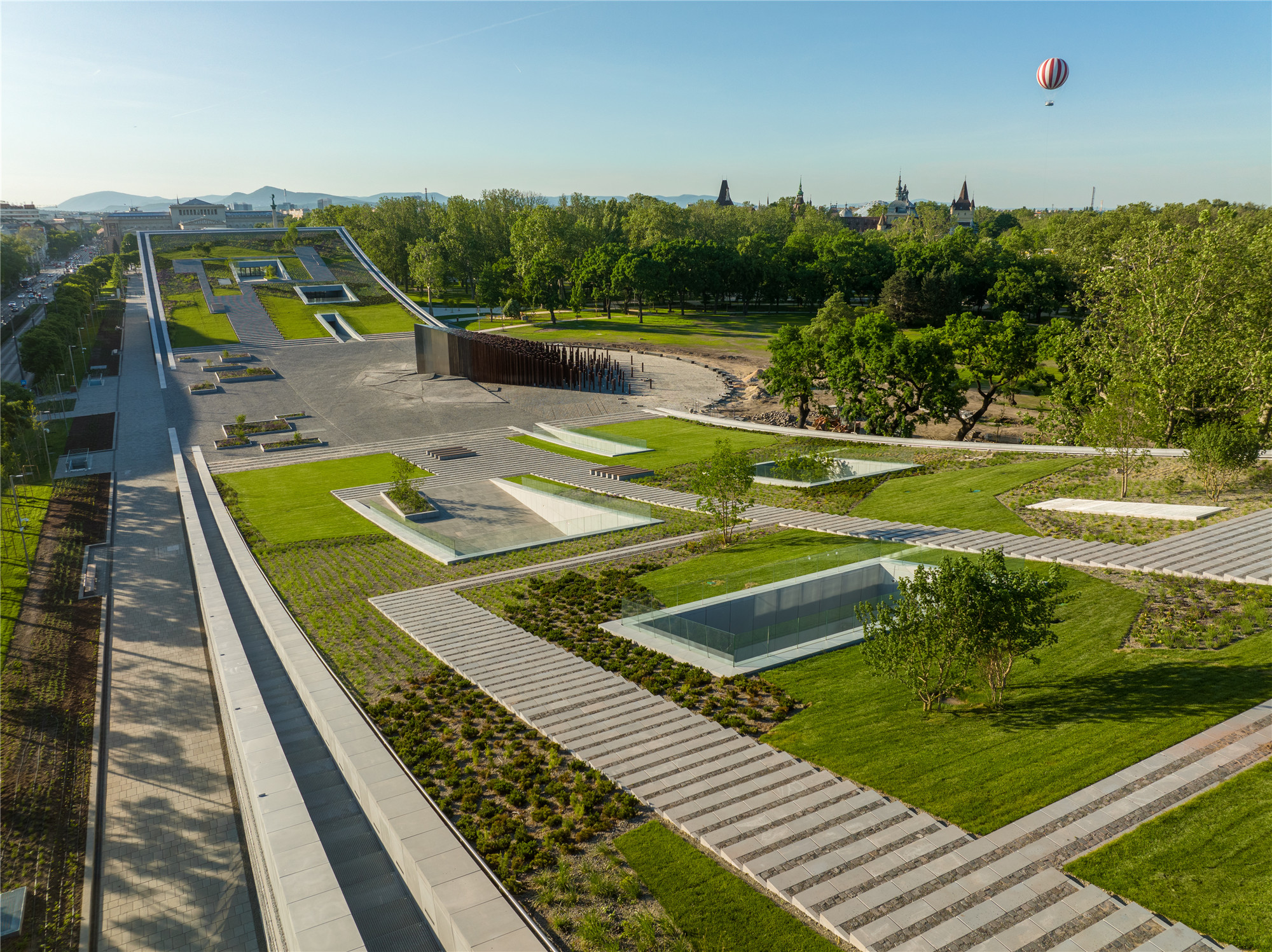

环绕屋顶花园的玻璃幕墙成为建筑独特的标志,形似两个交织的山坡。其由50万个像素块组成,在金属网格内形成光栅图案,成为博物馆藏品在建筑语言上的体现。
The spectacular trademark of the building is the glass curtainwall surrounding the landscaped roof garden, reminiscent of two intertwined hillsides, with a unique characteristic, consisting of nearly half a million pixels, a raster made by metal grid based on ethnographic motifs selected from the museum's Hungarian and international collections.

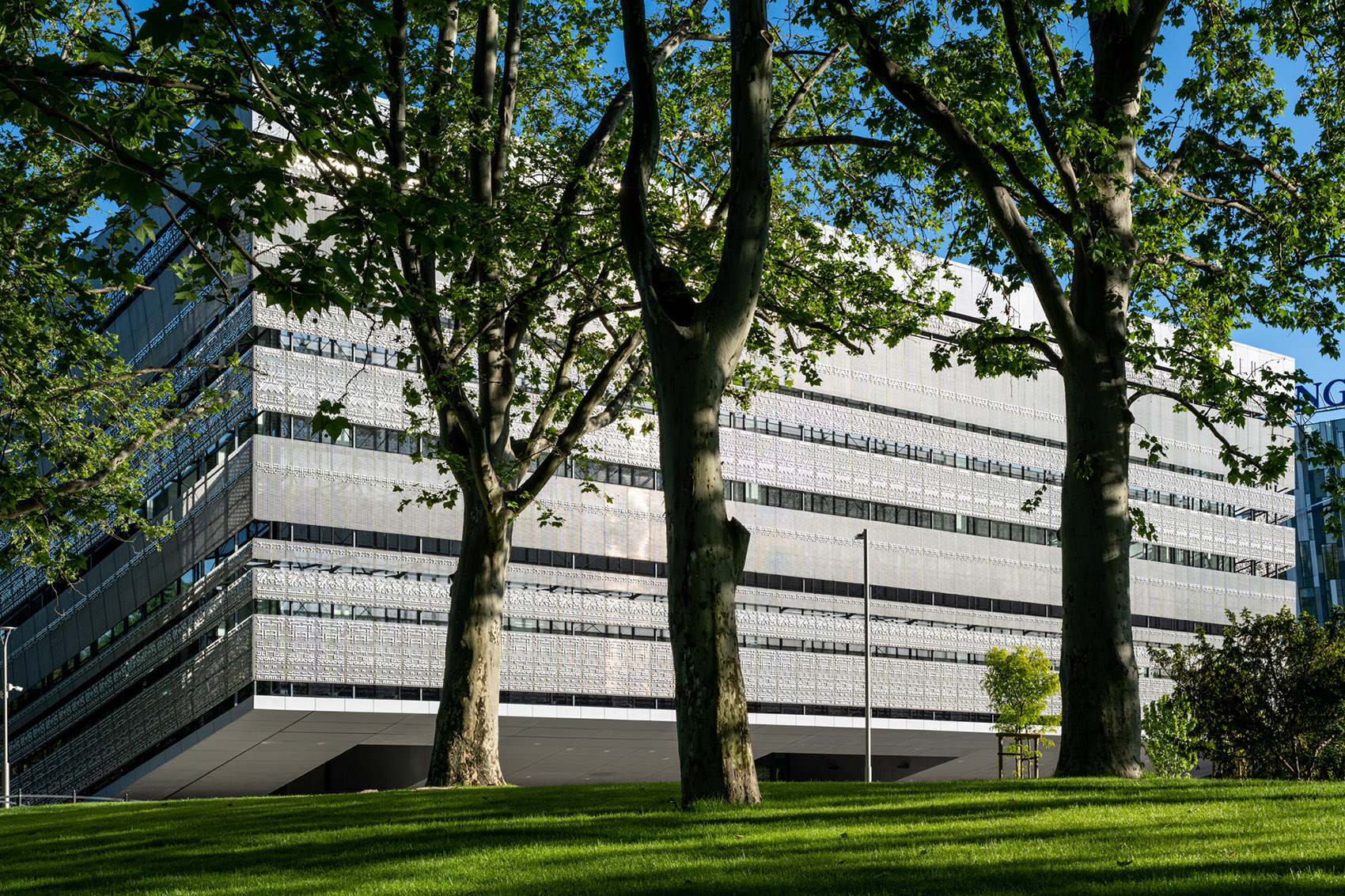
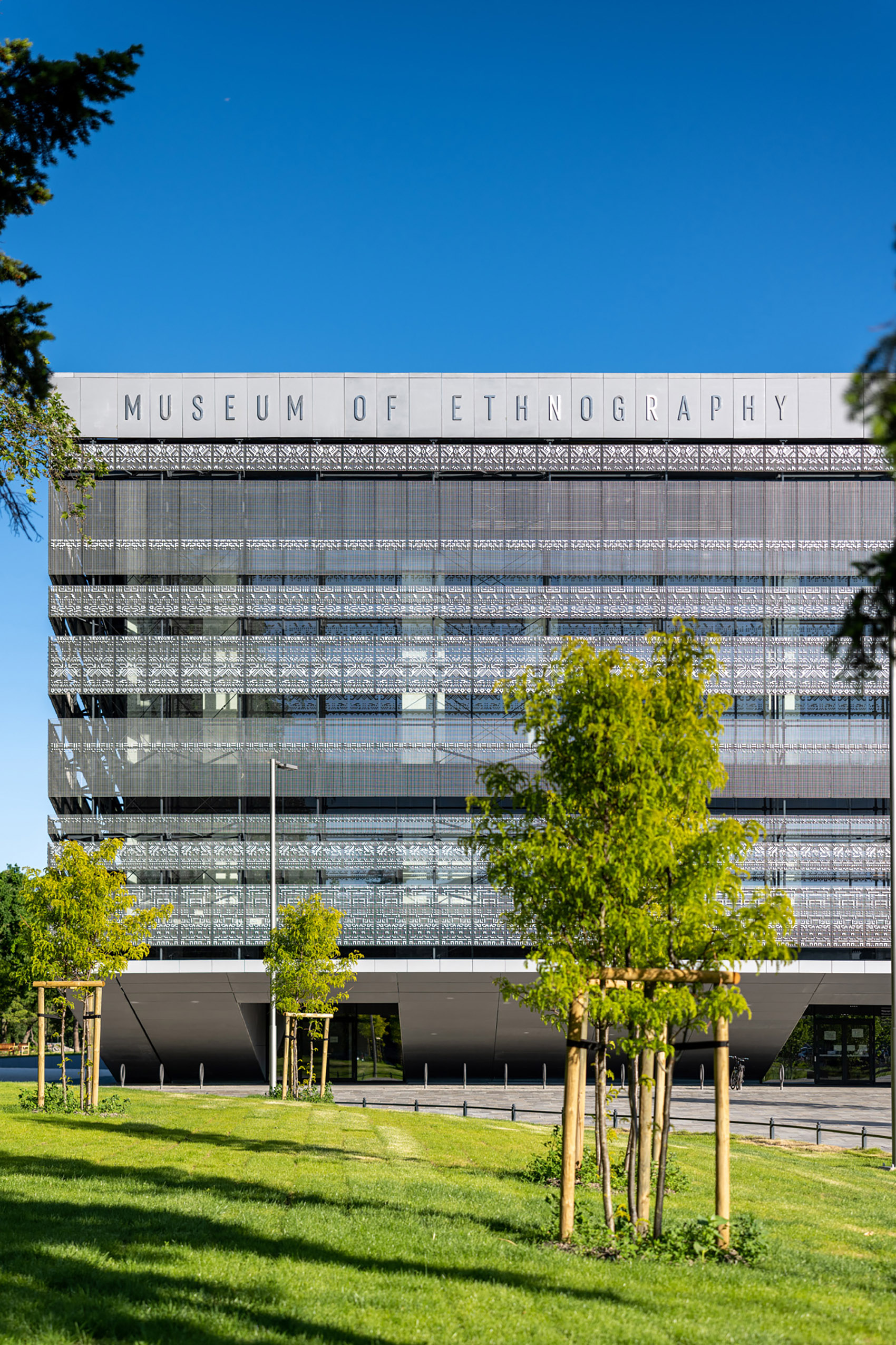
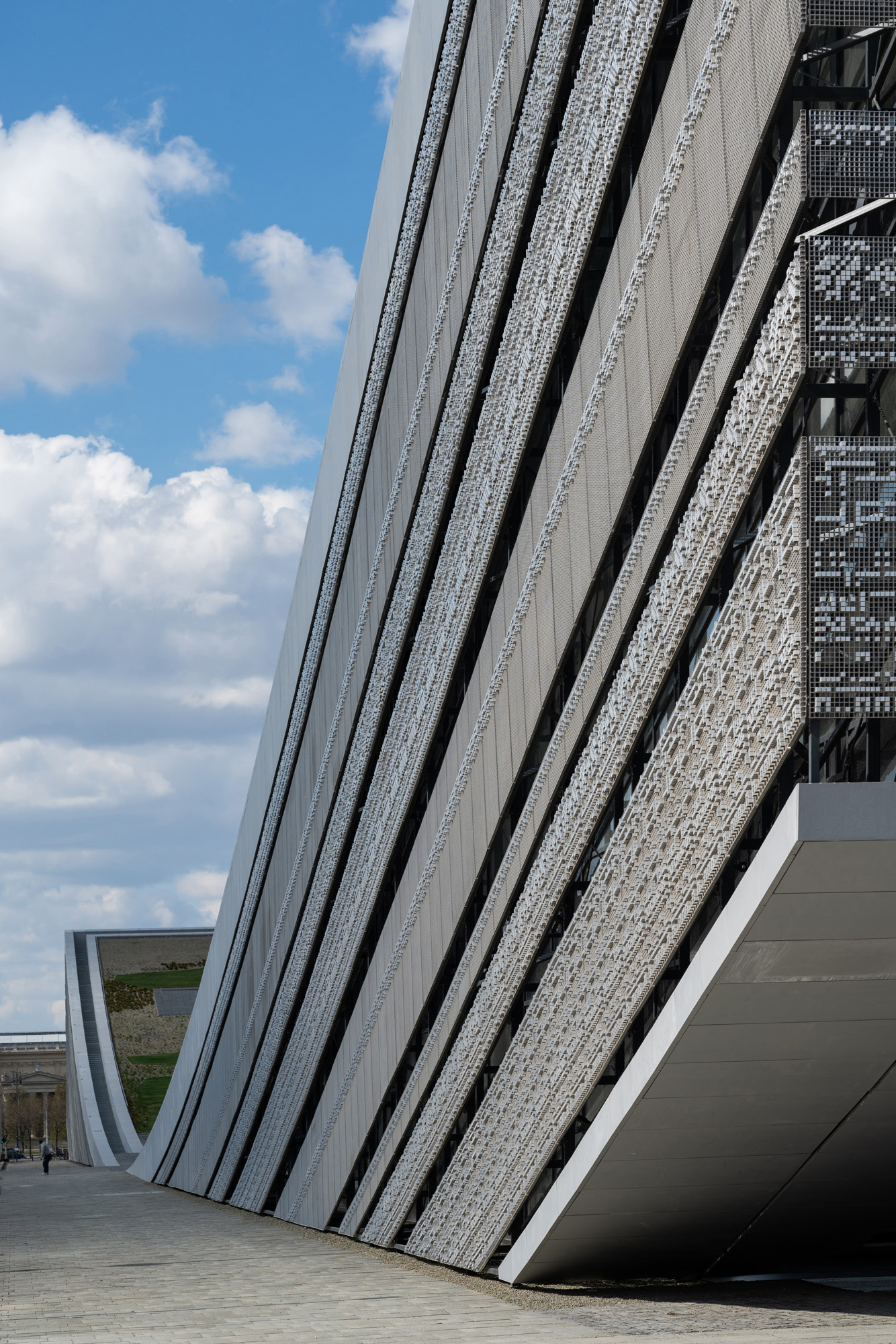
这些像素块通过一个特殊的机器人安装在激光切割的铝制网格中,其中有2000多个像素块同建筑本体直接相连。这些像素块以当代的表现手法,共同组成了40幅象征民族学的图案,其中一半为匈牙利本土元素,一半为海外元素。
The pixels were inserted into a laser-cut aluminum grid by a special robot, more than 2,000 of which are attached to the building. The small cubes were made up of 20 Hungarian and 20 international contemporary reinterpretations of ethnographic motifs.
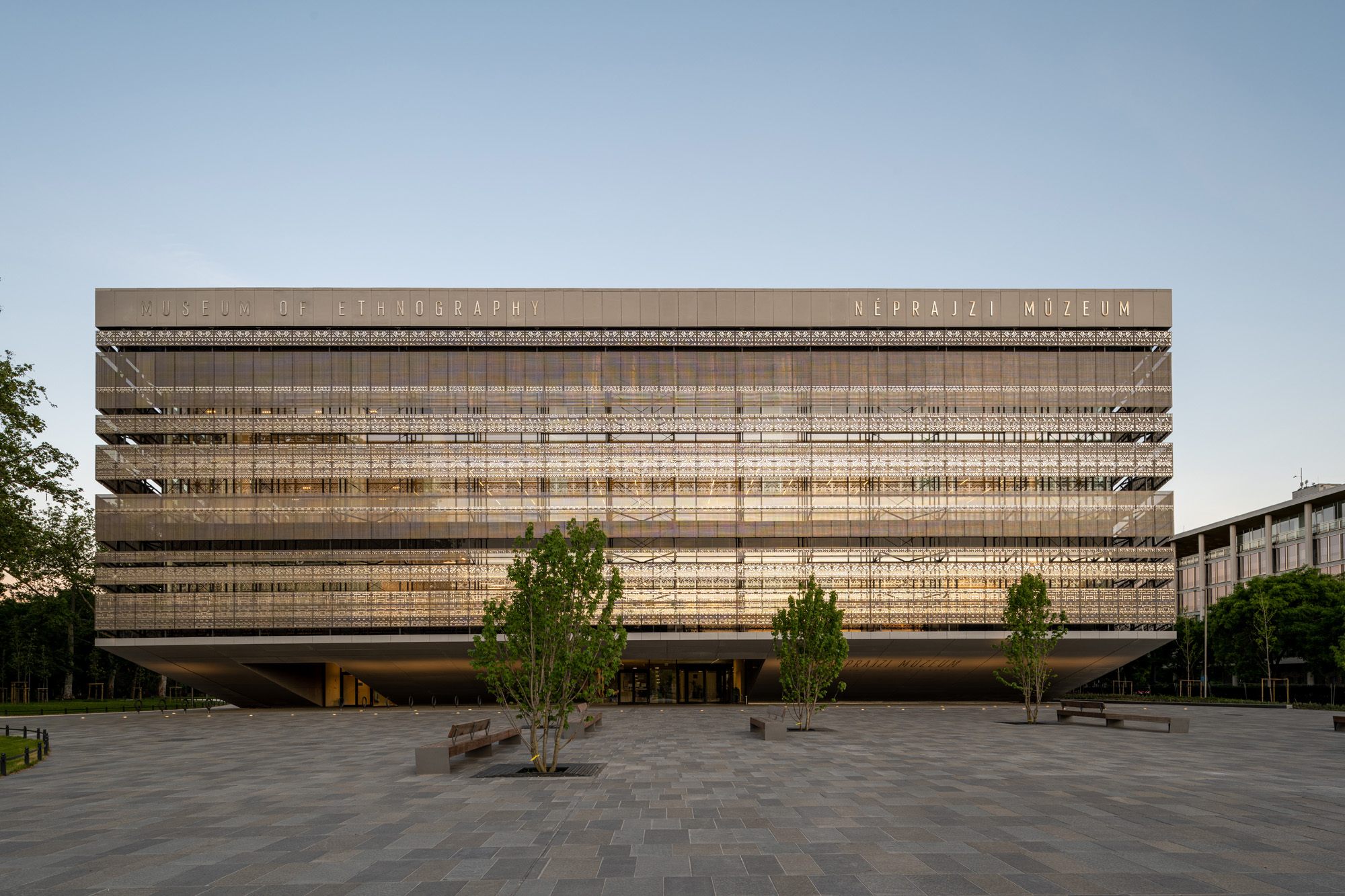
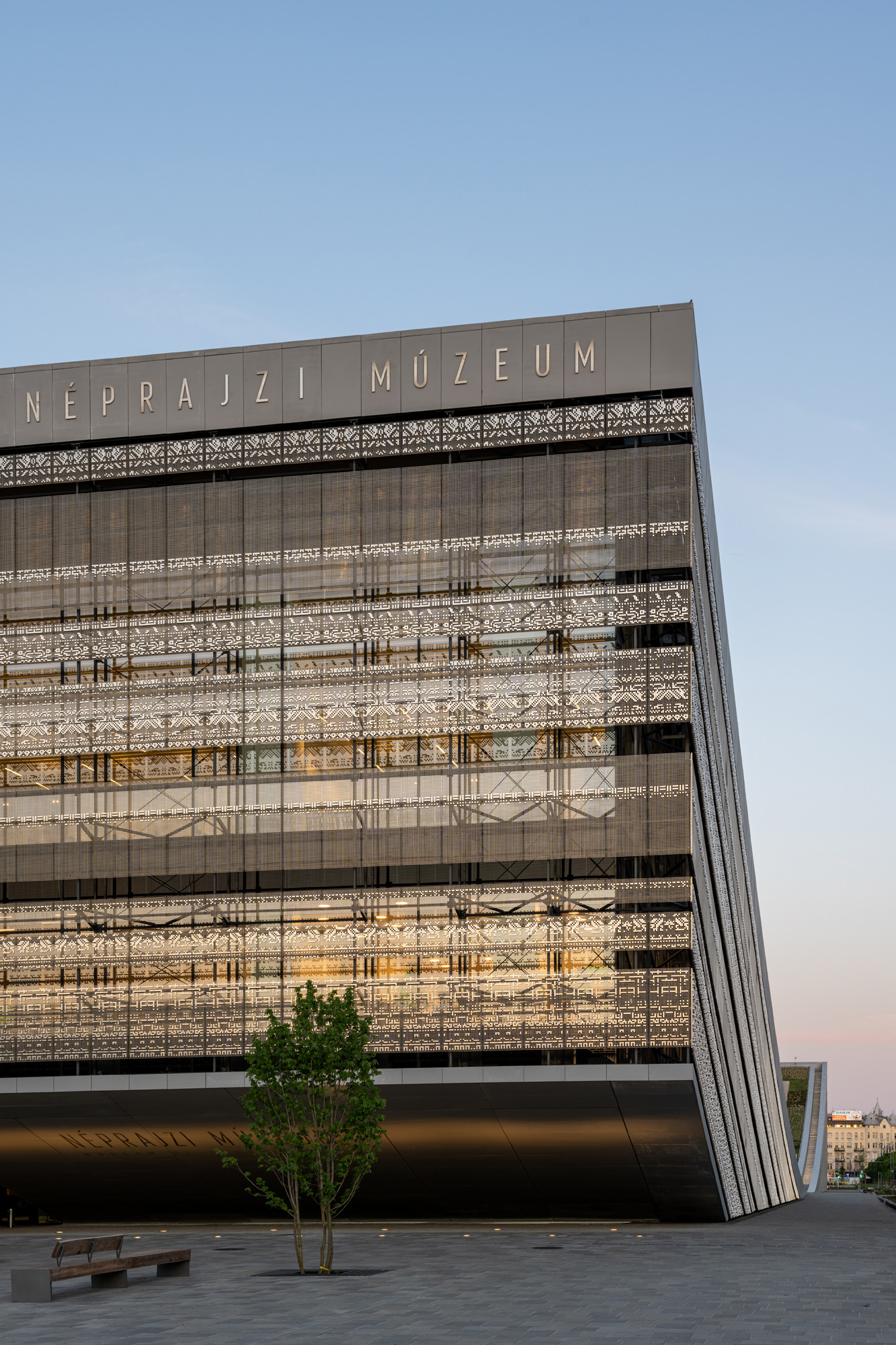
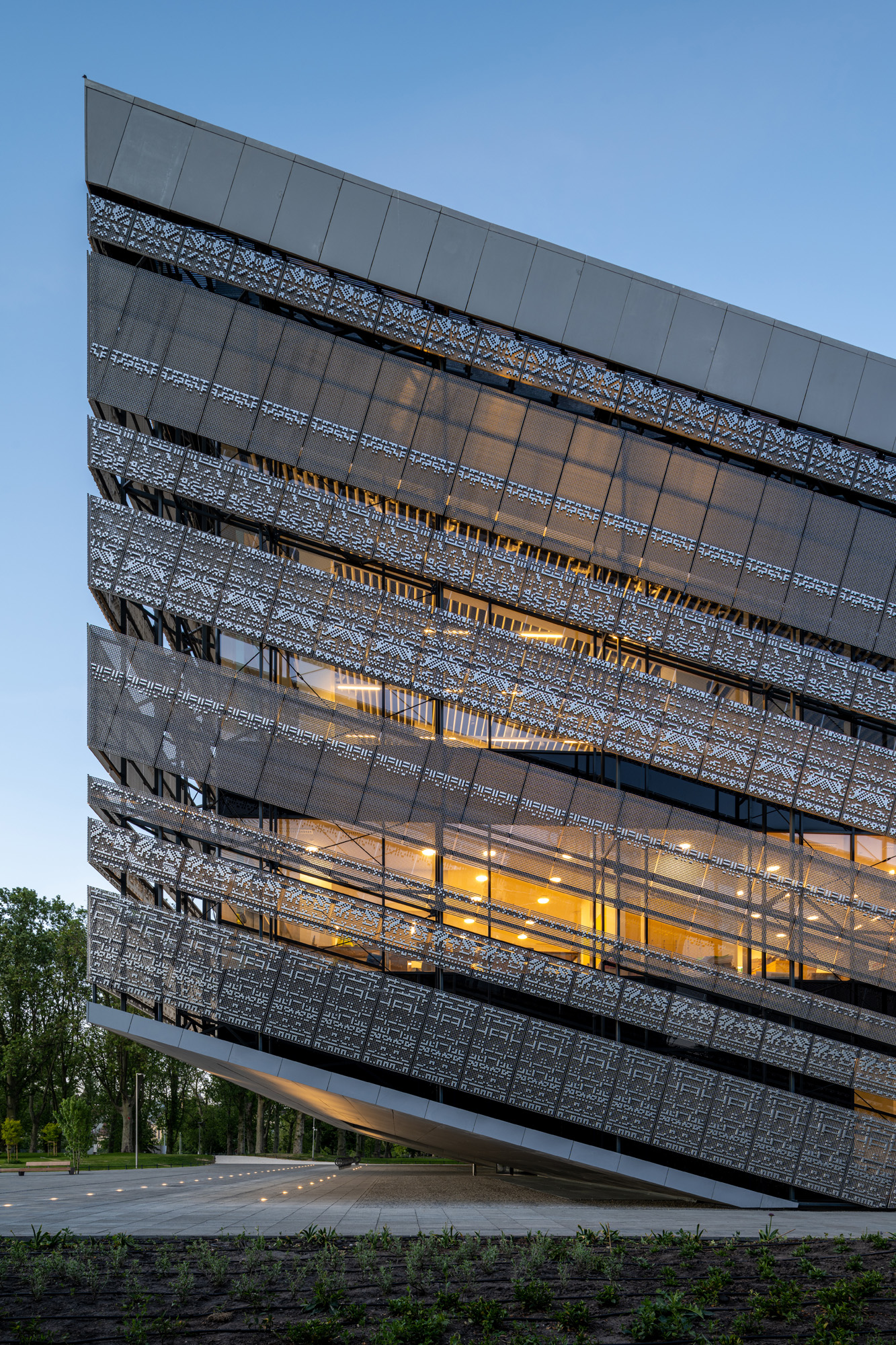
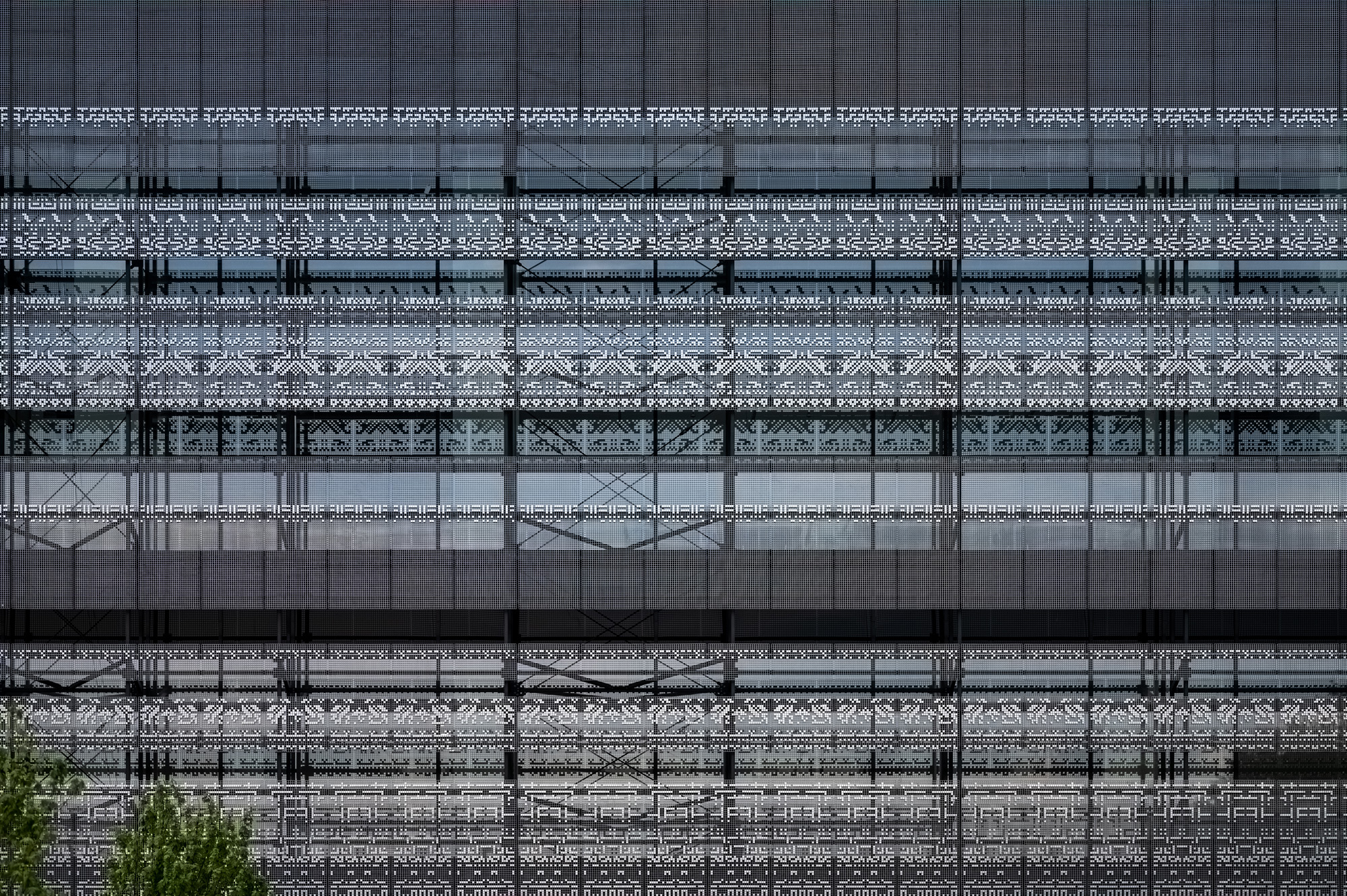
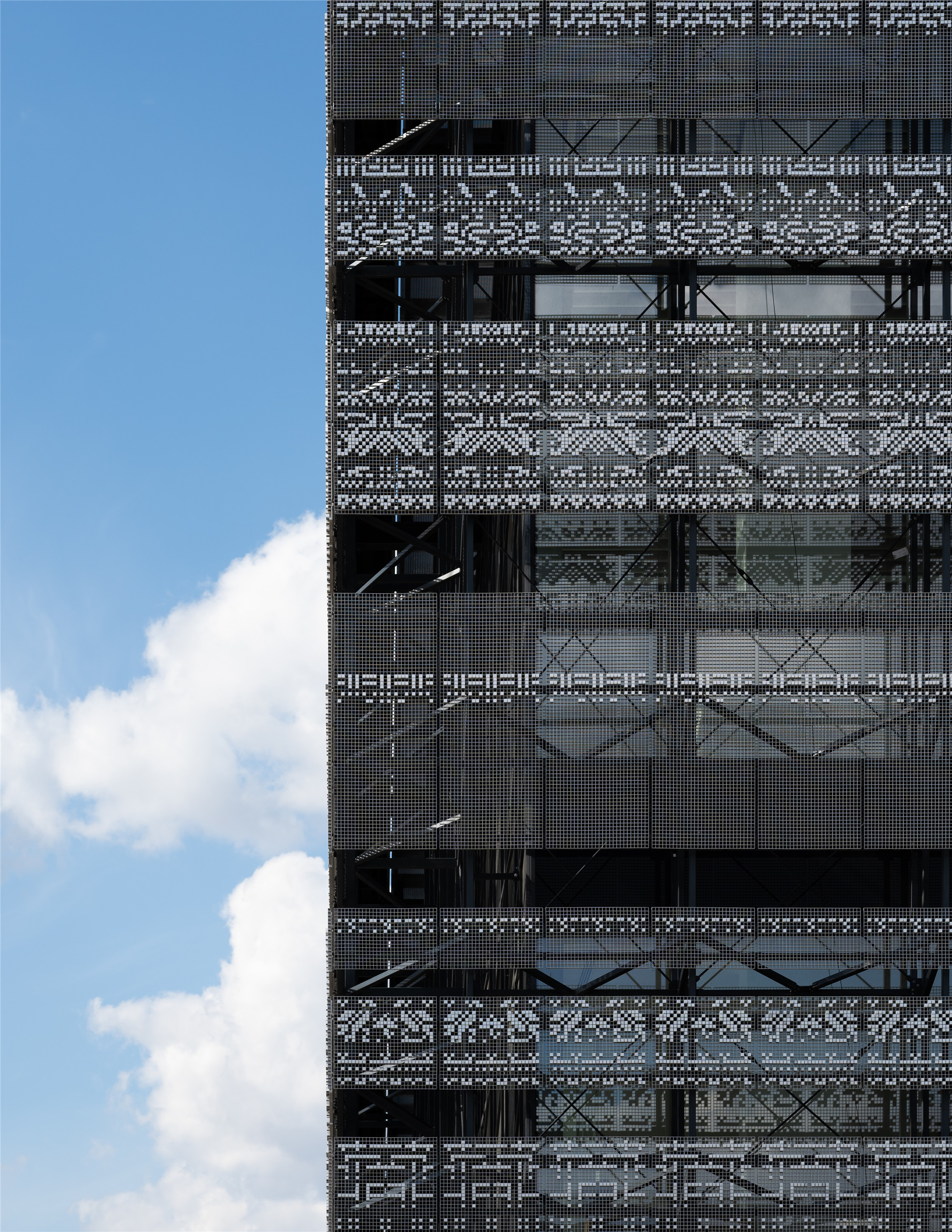
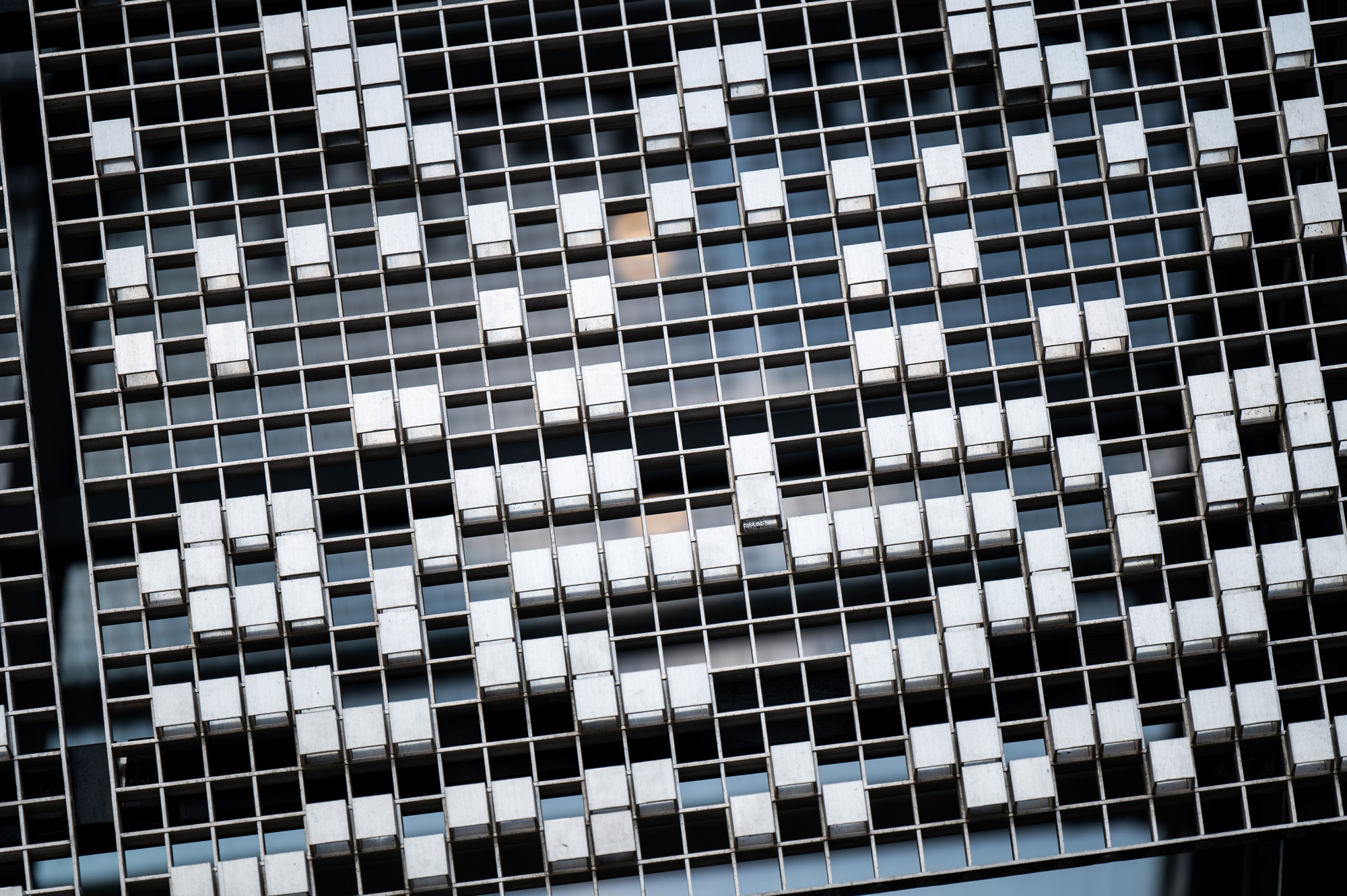
现代、先进的新博物馆建筑,将通过全新的功能与灵活的空间,通过藏品和当代社会的各个方面来促进人们对历史遗产的理解。而在传承之外,实现更多的专业研究成果仍然是博物馆的首要目标,这一观念在建筑的任务书中也得到了体现。创造性的建筑空间为参观者间的交流提供了全新的机会,让过去与当下的日常物品、现象以及思考得以同时呈现。
The new functions and flexible spaces of the modern and state-of-the-art museum building will facilitate the understanding of the historical heritage embodied by the collection as well as the various aspects of contemporary society. Besides passing down this historical heritage, the realisation of more recent professional and research themes and perspectives continues to be among the priority objectives of the museum, as confirmed by its mission. The creatively built spaces will open up new opportunities to communicate with visitors, enabling the presentation of the everyday objects, phenomena and ideas of the past and the present side by side.
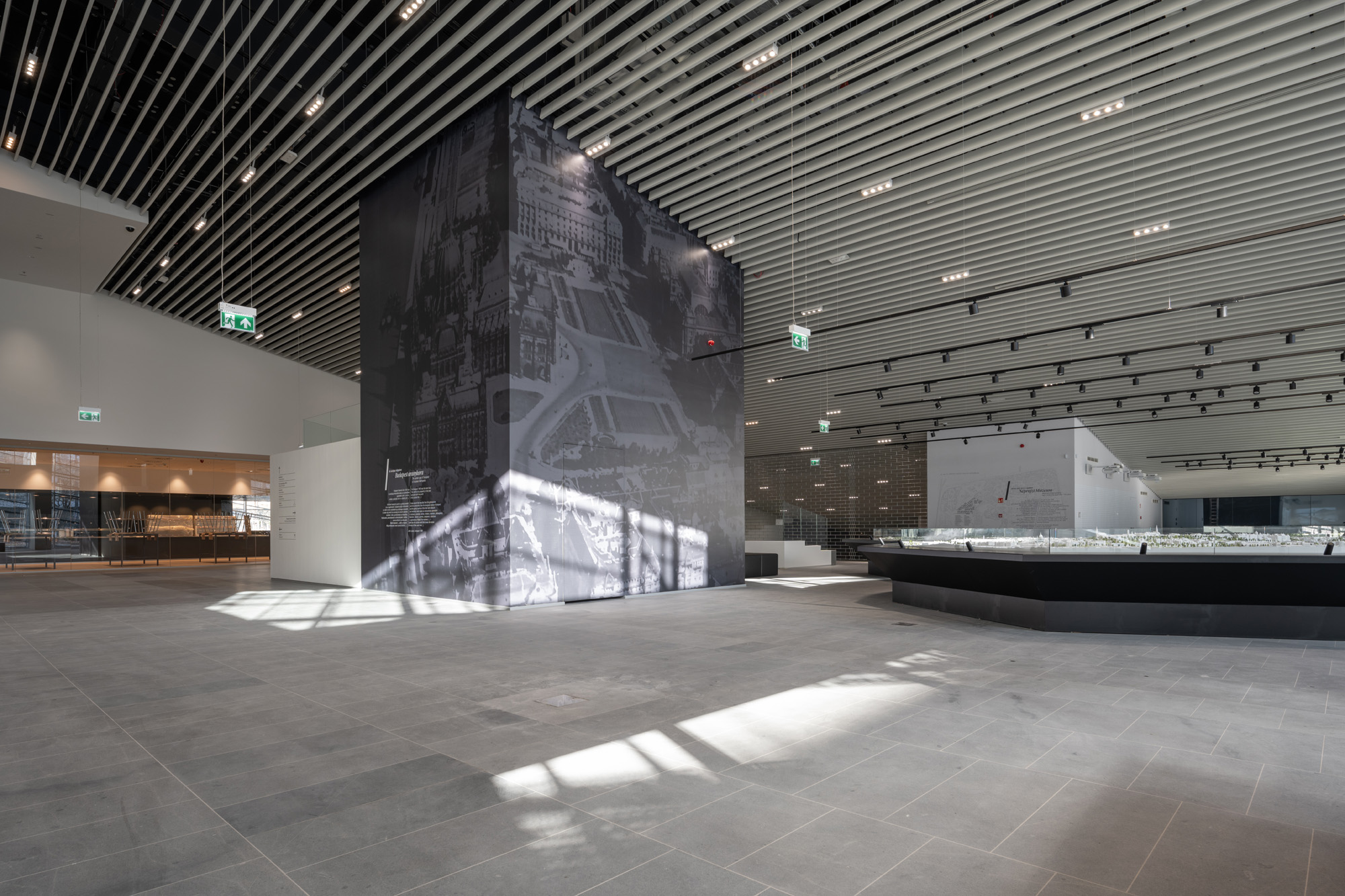
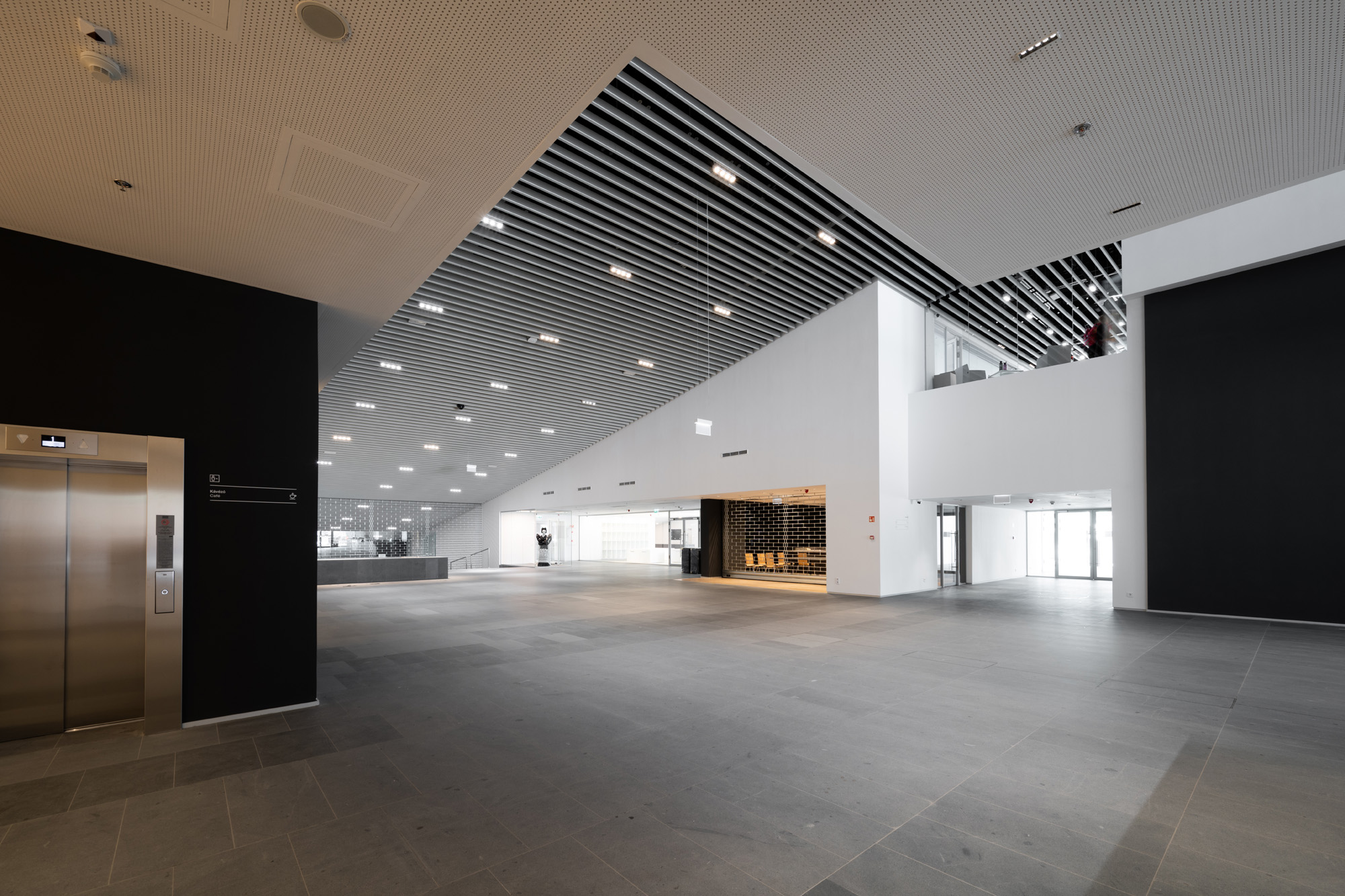
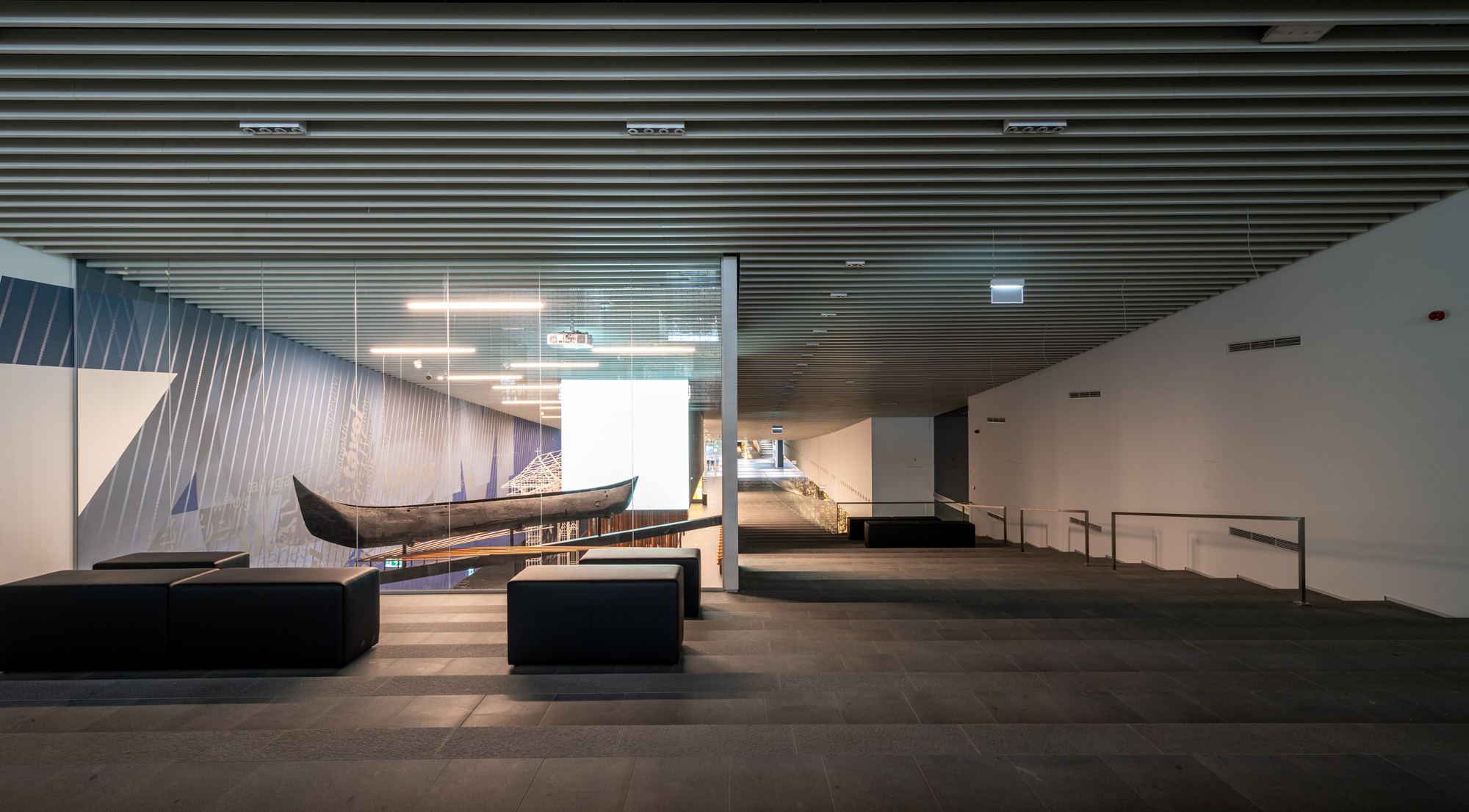
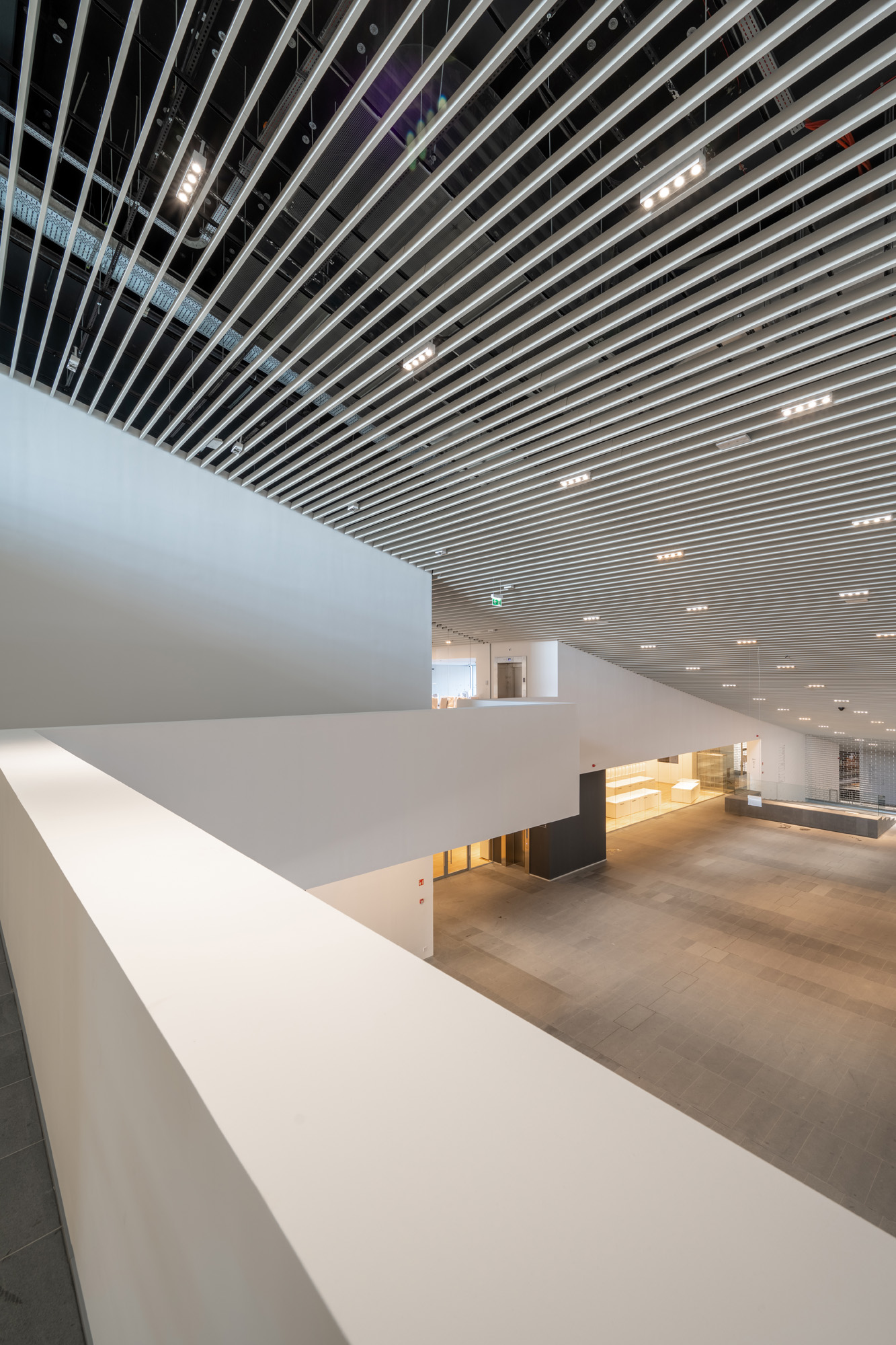
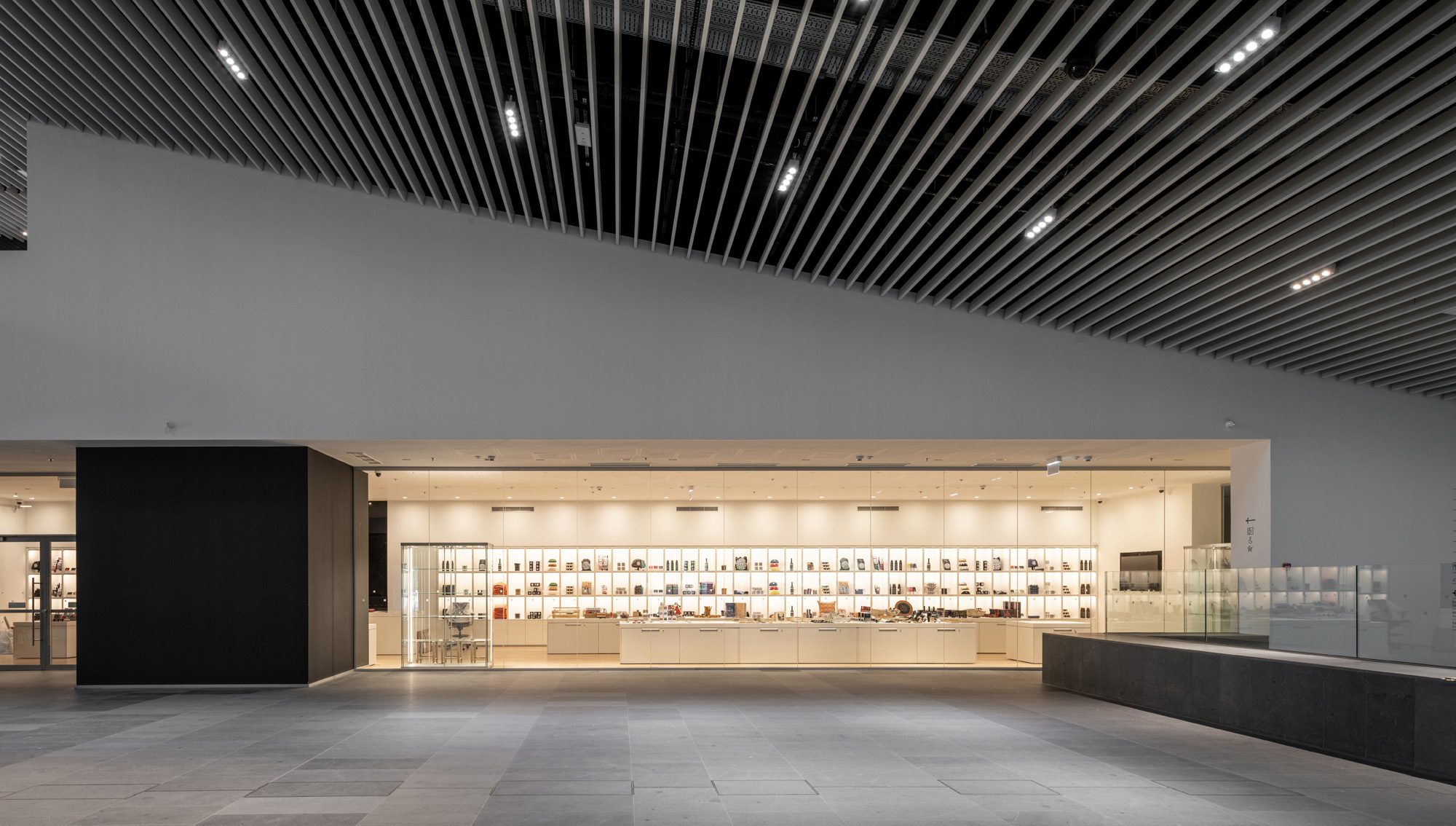

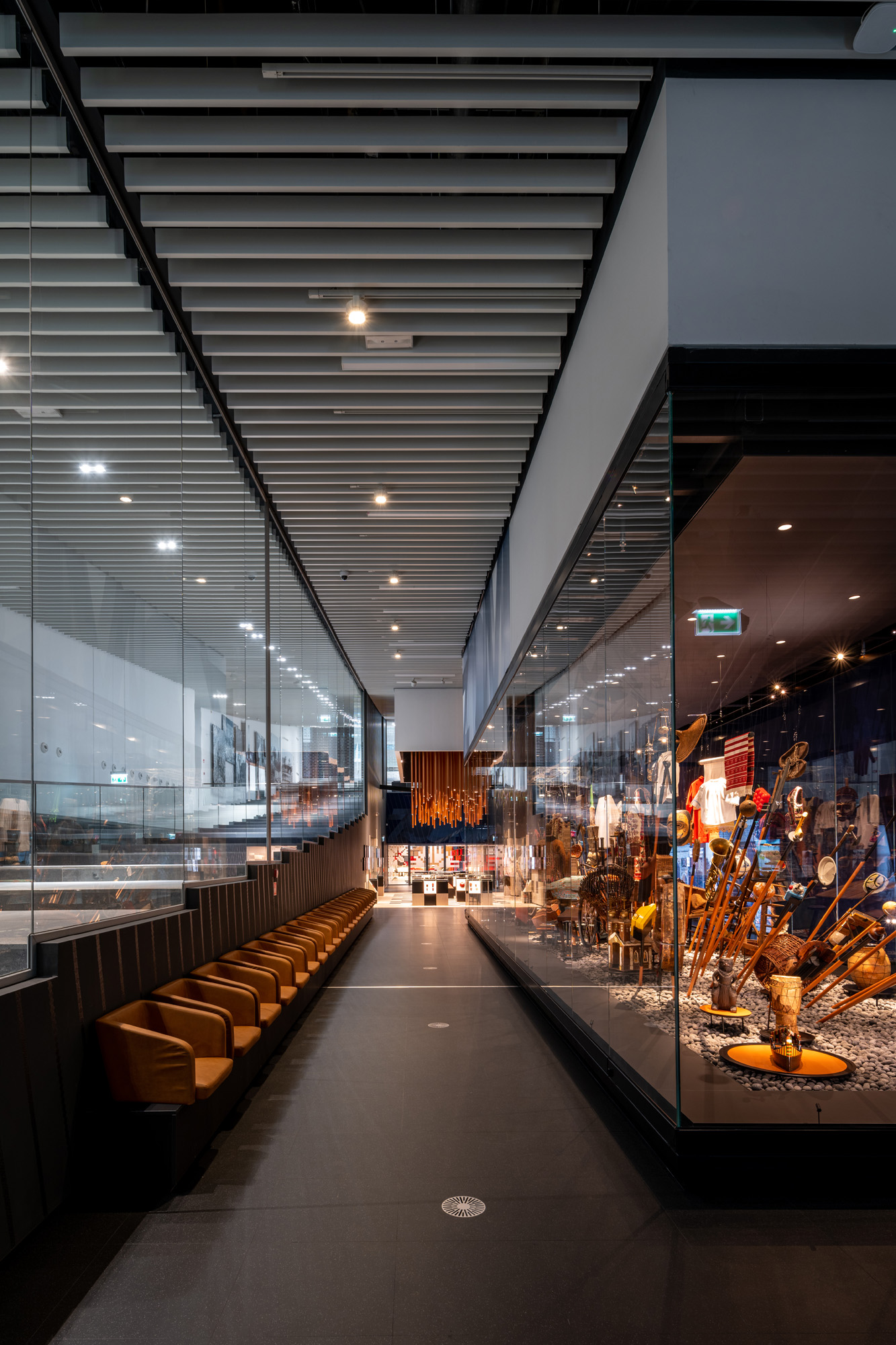
这一为博物馆“量身定制”的建筑,在设计时最大程度地考虑了功能的需要,不仅将博物馆的尺度、现代性以及便利程度提升至一个新的高度,同时也在夺目的外观上展示出人类的物质与精神文明遗产,呈现来自匈牙利乃至全世界的收藏。
The purpose-built museum was designed with maximum consideration for the required functions, and thus facilitates the large-scale, modern, user-friendly operation of the institution to a significant degree, along with the visually enticing and diverse display of mankind’s material and spiritual heritage, as well as the collection comprising Hungarian and international material.
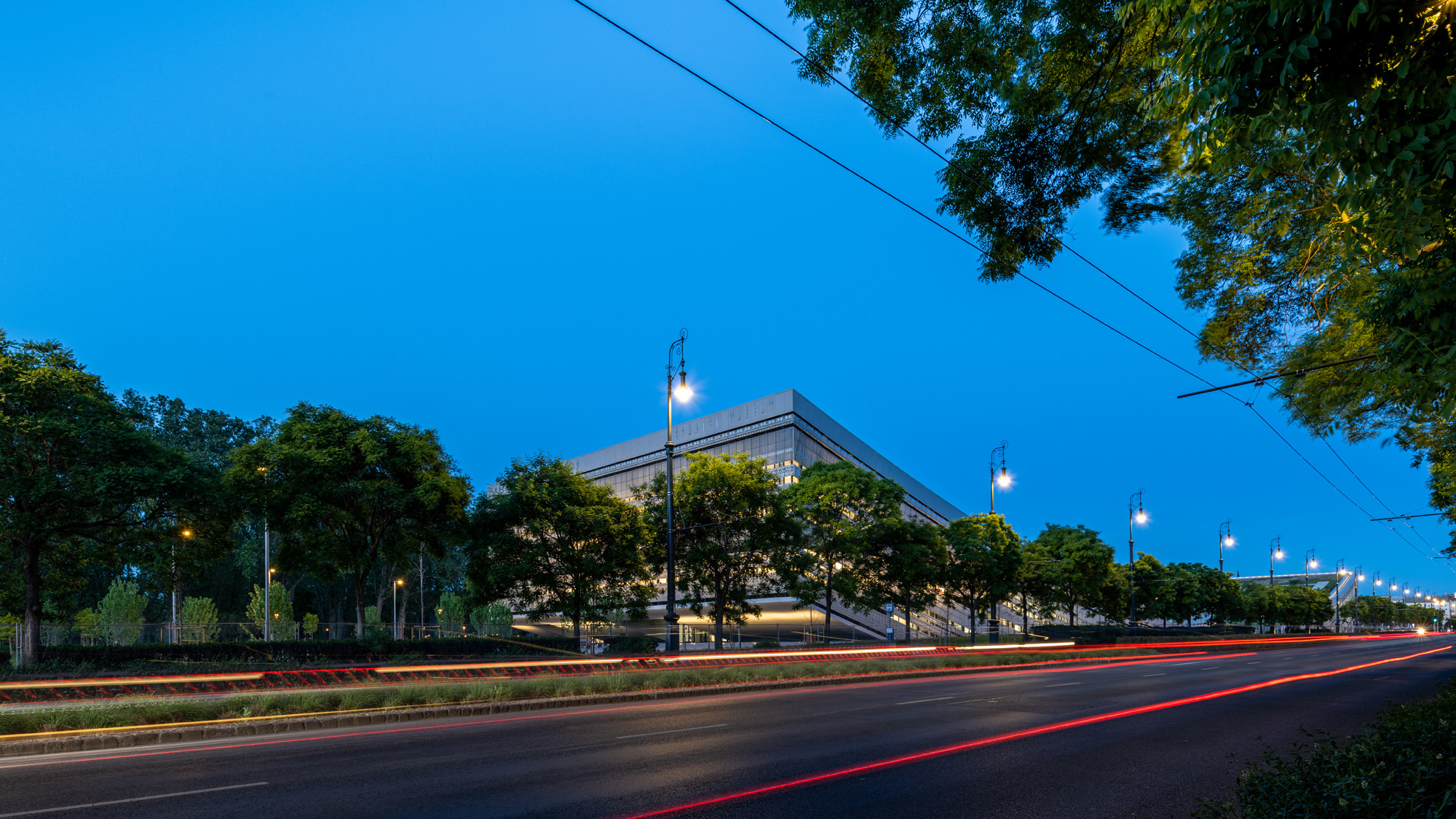
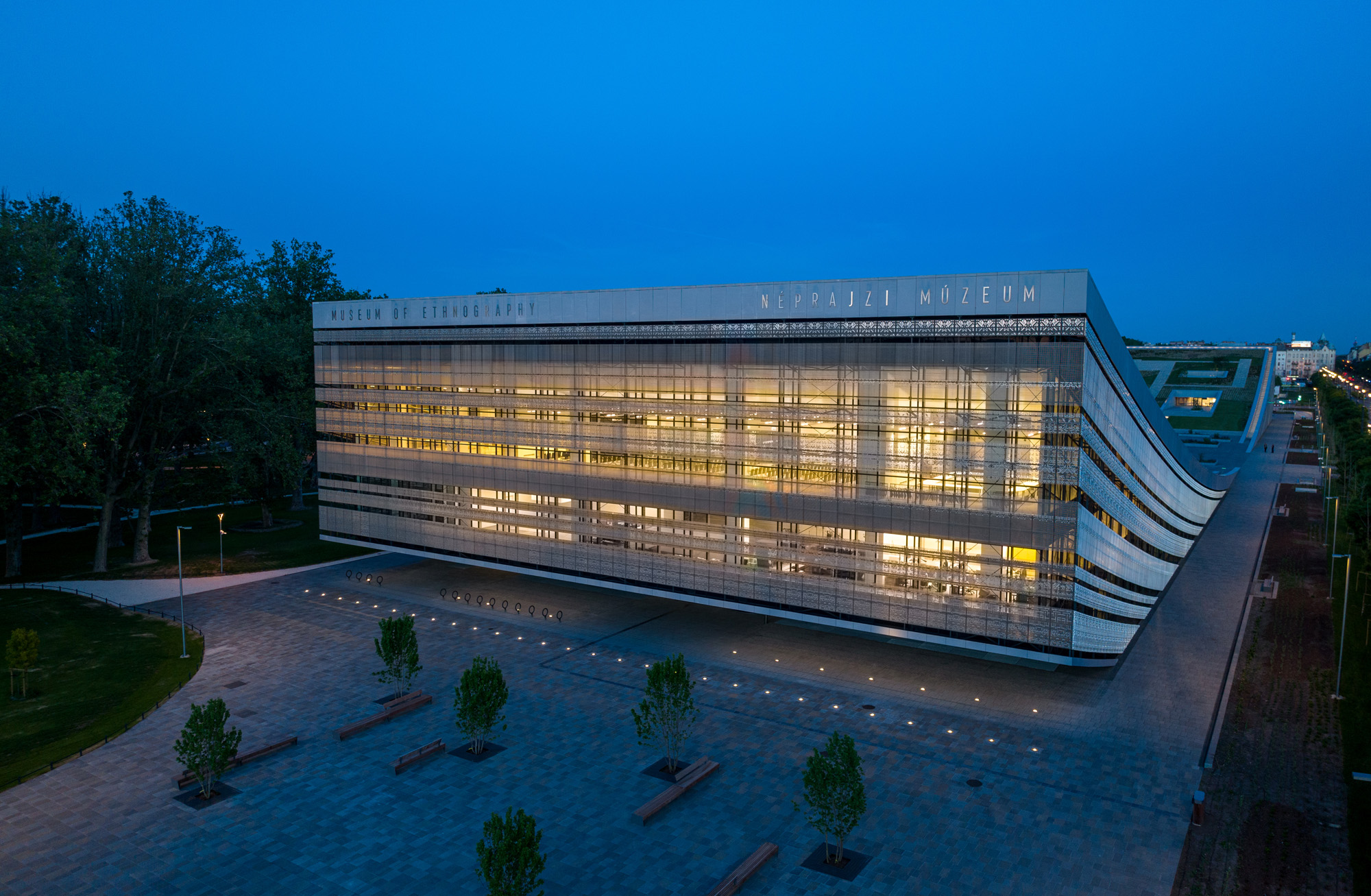


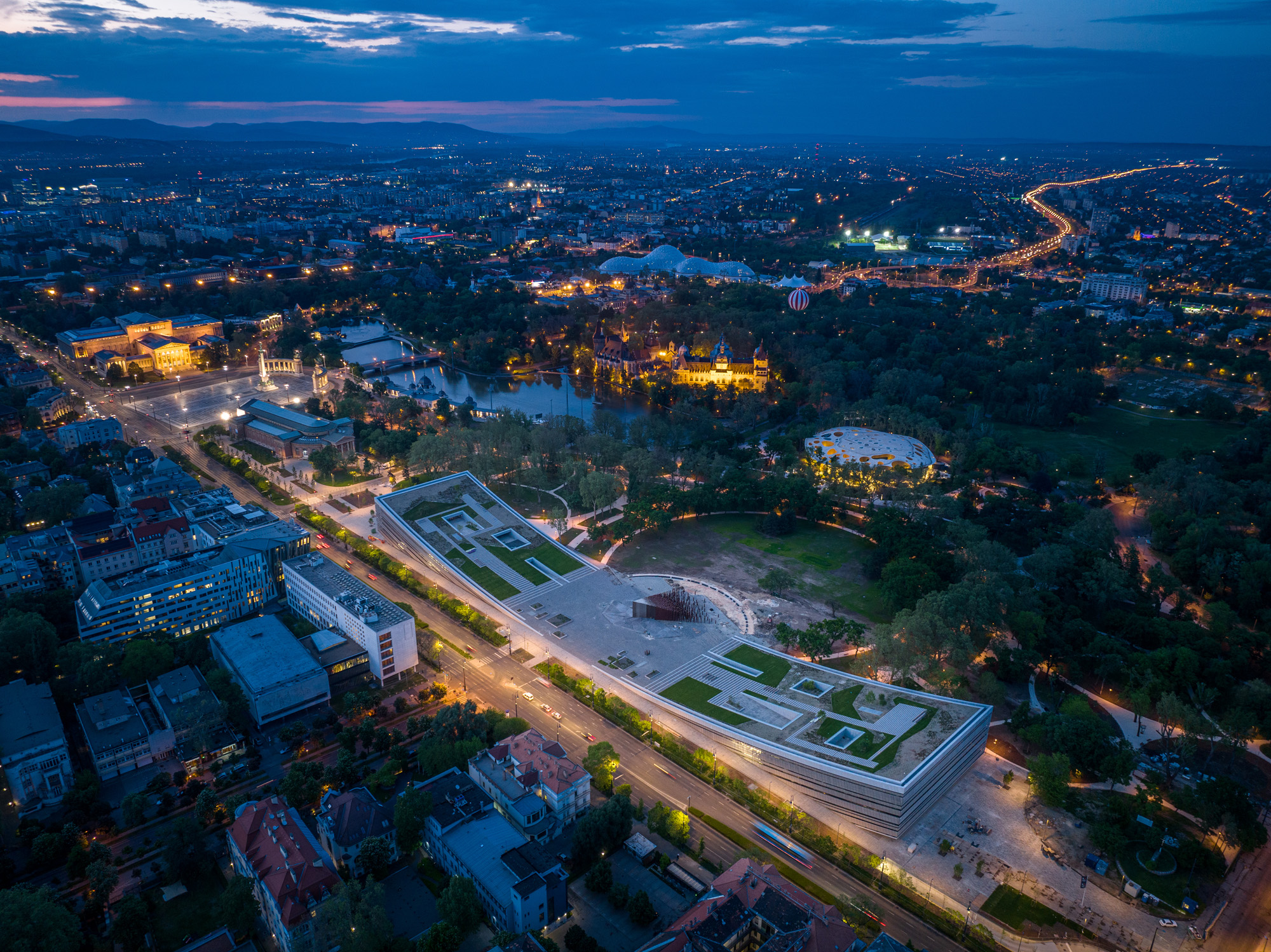
设计图纸 ▽
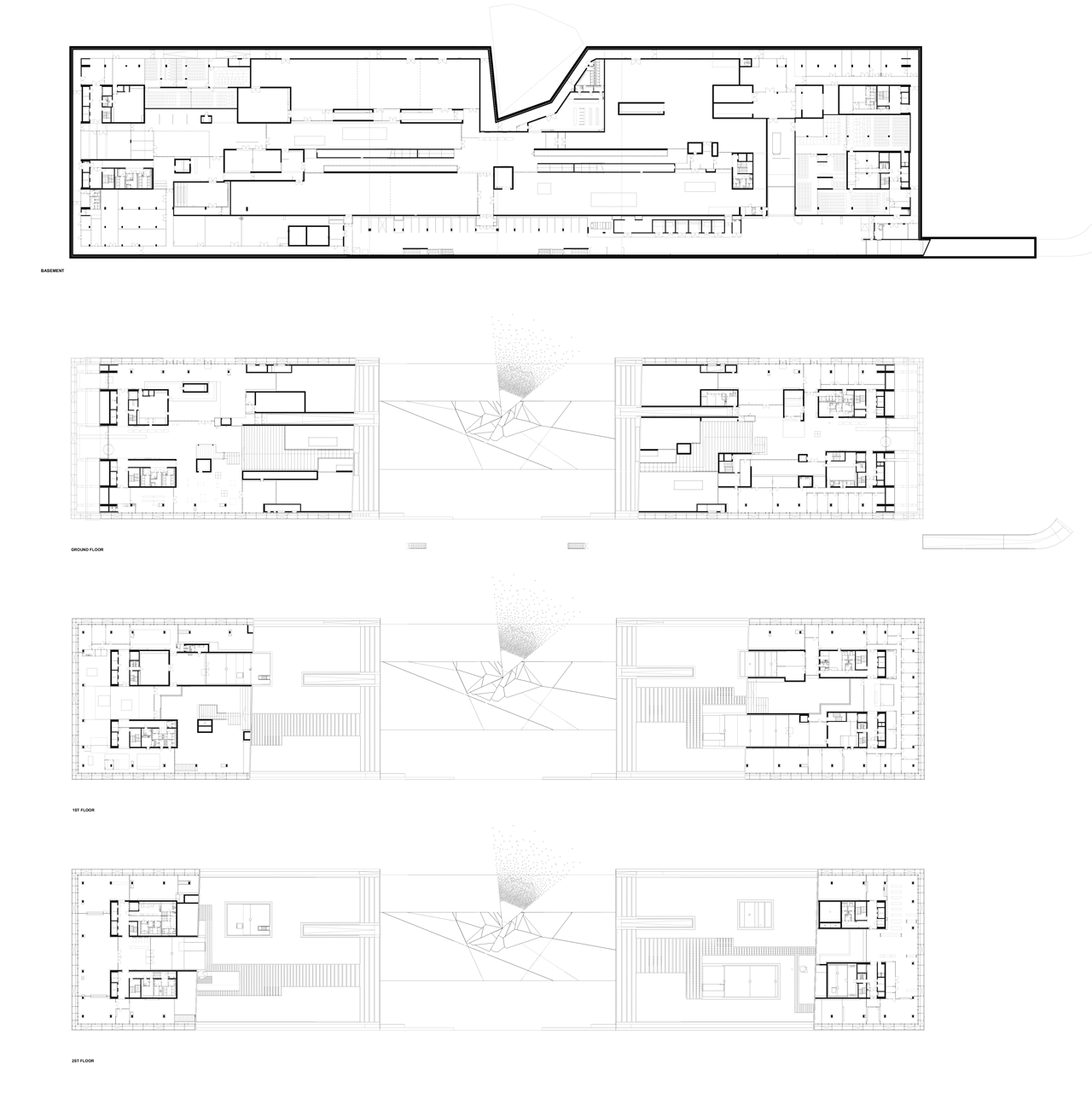

完整项目信息
Project name: New Museum of Ethnography
Project Location: Budapest, Hungary_Városliget
Client: Városliget Zrt.
Benedek Gyorgyevics, the CEO of Városliget Zrt
Lajos Kemecsi, the director of the Museum of Ethnography
László Baán, the project’s ministerial commissioner.
Architecture firm: Napur Architect LtD.
Principal architect: Marcel FERENCZ
Design team: György Détári, Filó Gergely, Holyba Pál, Nyul Dávid, Grócz Csaba, Mészáros Mónika
Photography: Palkó György
Collaborators:
Interior design: Czakó Építész Ltd.
Support structure: Exon 2000 Ltd. Szántó László
Building engineering: HVarC Ltd. Lucz Attila
Landscaping: Garten Studio Ltd.
Built area: 33,000 m²
Site area: 100,000 m²
Design year: 2016-2018
Completion year: 2022
Typology: Museum
Status: Built
General contractor: ZÁÉV Építőipari Zrt. and Magyar Építő Zrt.
本文由Napur Architect授权有方发布。欢迎转发,禁止以有方编辑版本转载。
上一篇:山岭层叠:成都当代艺术馆与人文艺术图书馆 / 中建西南院
下一篇:实施方案 | 大红门服装商贸城之新生:北京南中轴国际文化科技园 / BIAD吴晨工作室+深圳建科院